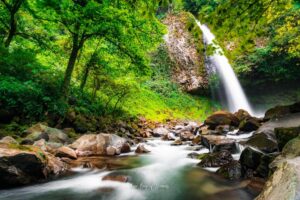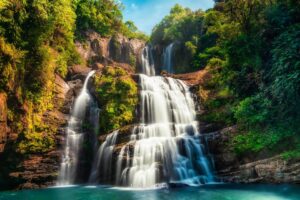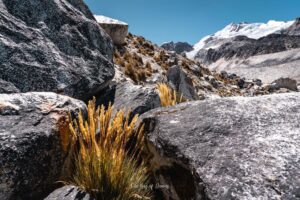The Perfect Way to Spend Two Weeks in Bali
Welcome to the wonderful island of Bali. A spiritual island. Bali is the destination of dreams. The wild rainforests, beautiful beaches and entrancing temples make Bali completely unique. Bask in the Indonesian sunshine, travel around and ride the waves of this unparalleled paradise.
Contents
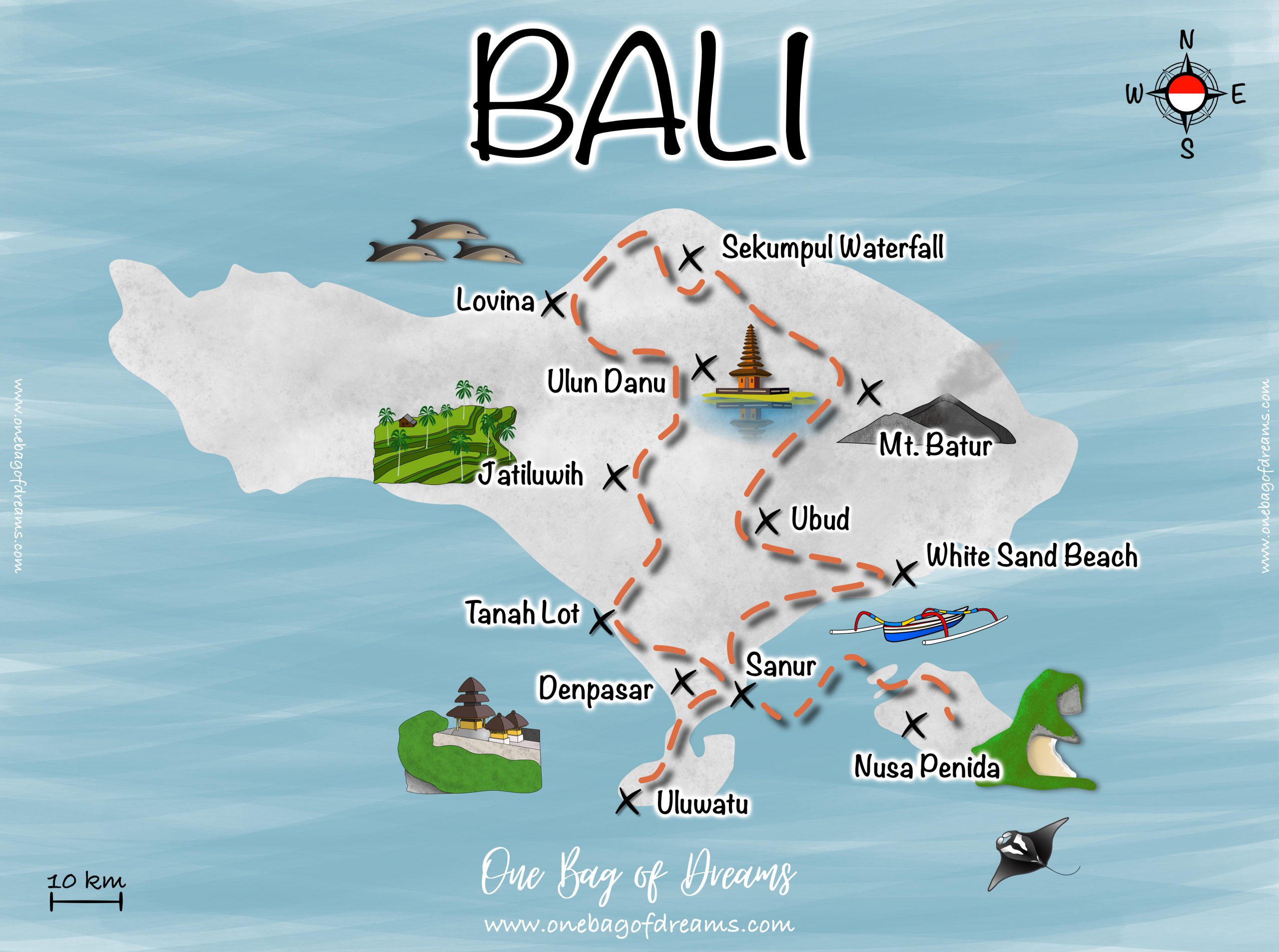
Week 1 - Temple Spotting and Island Hopping in Bali
Your first week in Bali is packed full of magnificent cultural sights and stunning scenery.
Day 1: Dive into the Culture and Swim in the Sea
Head to the Pura Puseh Desa Tempel in Batubulan, a wonderfully decorated temple. Here, just a few meters off the road, you can witness the powerful Barong Dance. This dance expresses the fight between good and evil.
Walk around the temple and take in the distinct culture awaiting you. The Barong Dance usually starts at 9:30 am. The sounds and costumes make for a deeply dramatic performance.
After this, we recommend that you recover from your jet lag whilst sipping drinks from a coconut shell on the beach at Sindhu. Here you will see the traditional Balinese boats waiting to be launched. You will also discover a variety of restaurants where you can peacefully enjoy your first evening.
This is only the beginning of your amazing adventure!
Top Tip: When visiting temples, wear something modest, covering shoulders and legs. This will make sure that you appear respectful and you will feel more comfortable exploring these important places.
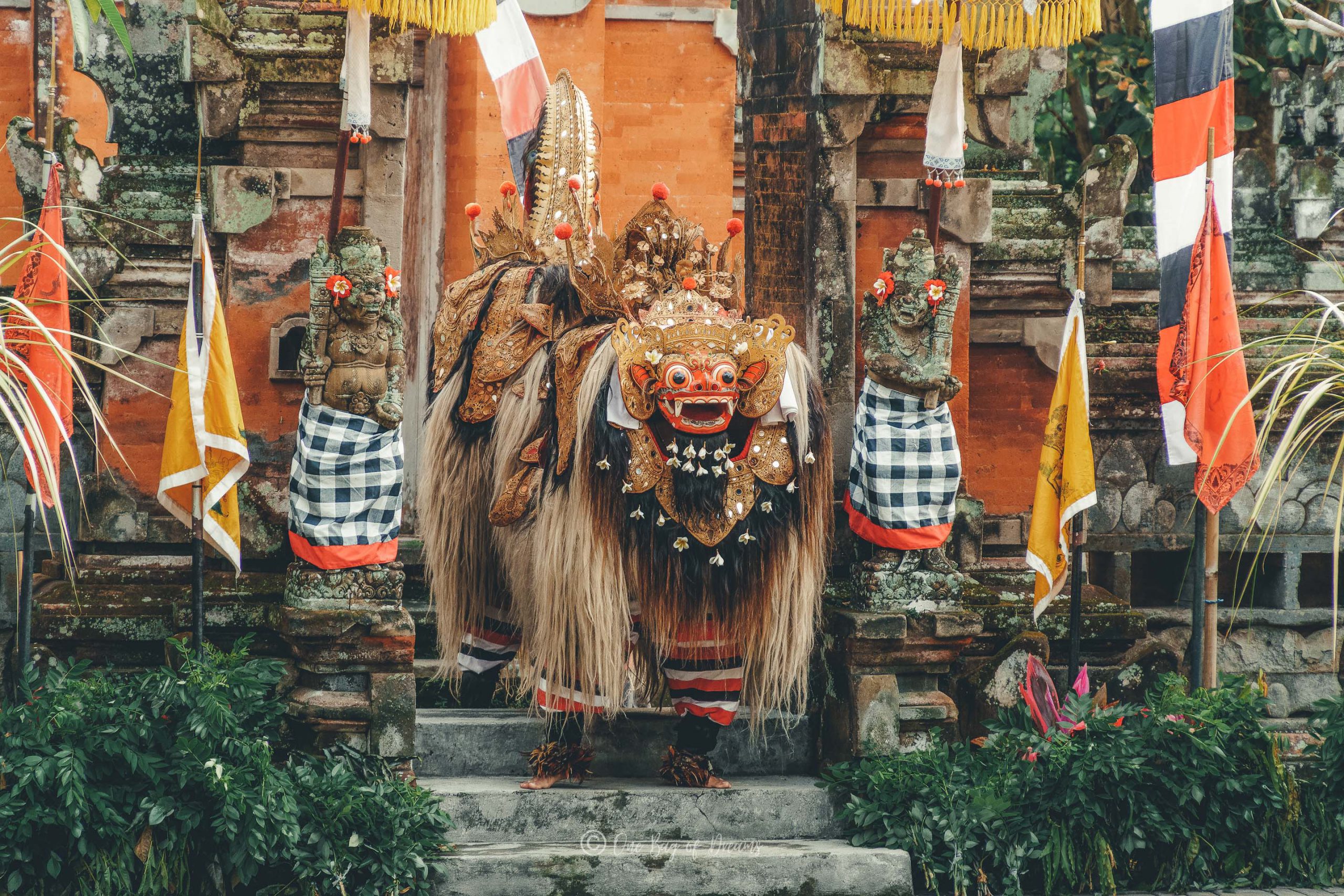
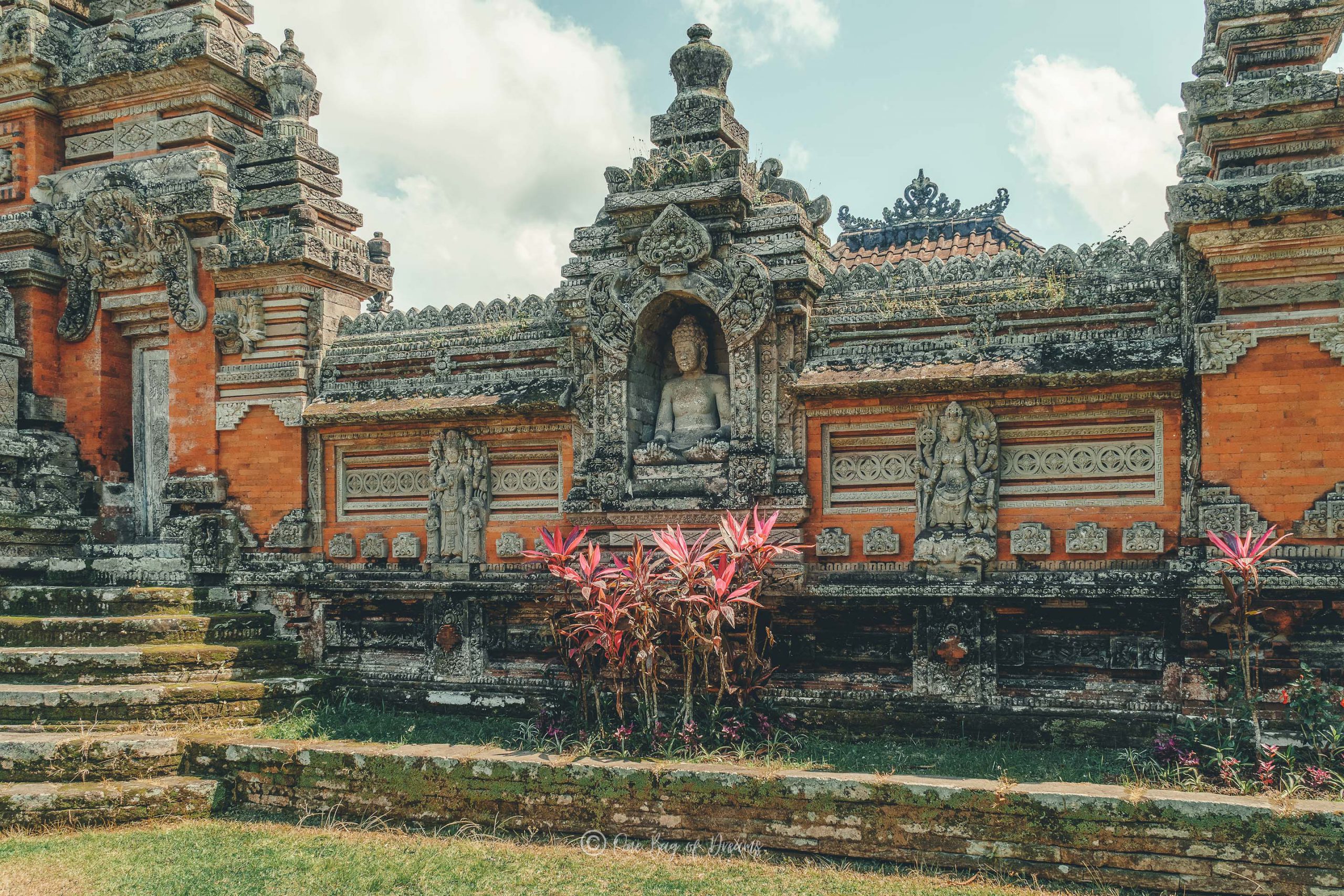
Day 2-3: Take a Boat From Bali to Nusa Penida
This little island is an absolute gem! It is worth taking an extra trip to see the beautiful sights of this island. You can simply hop on a speed boat from Sanur. It is on this rustic little island that you will spot some of the world-famous scenery seen in travel photography all over the world.
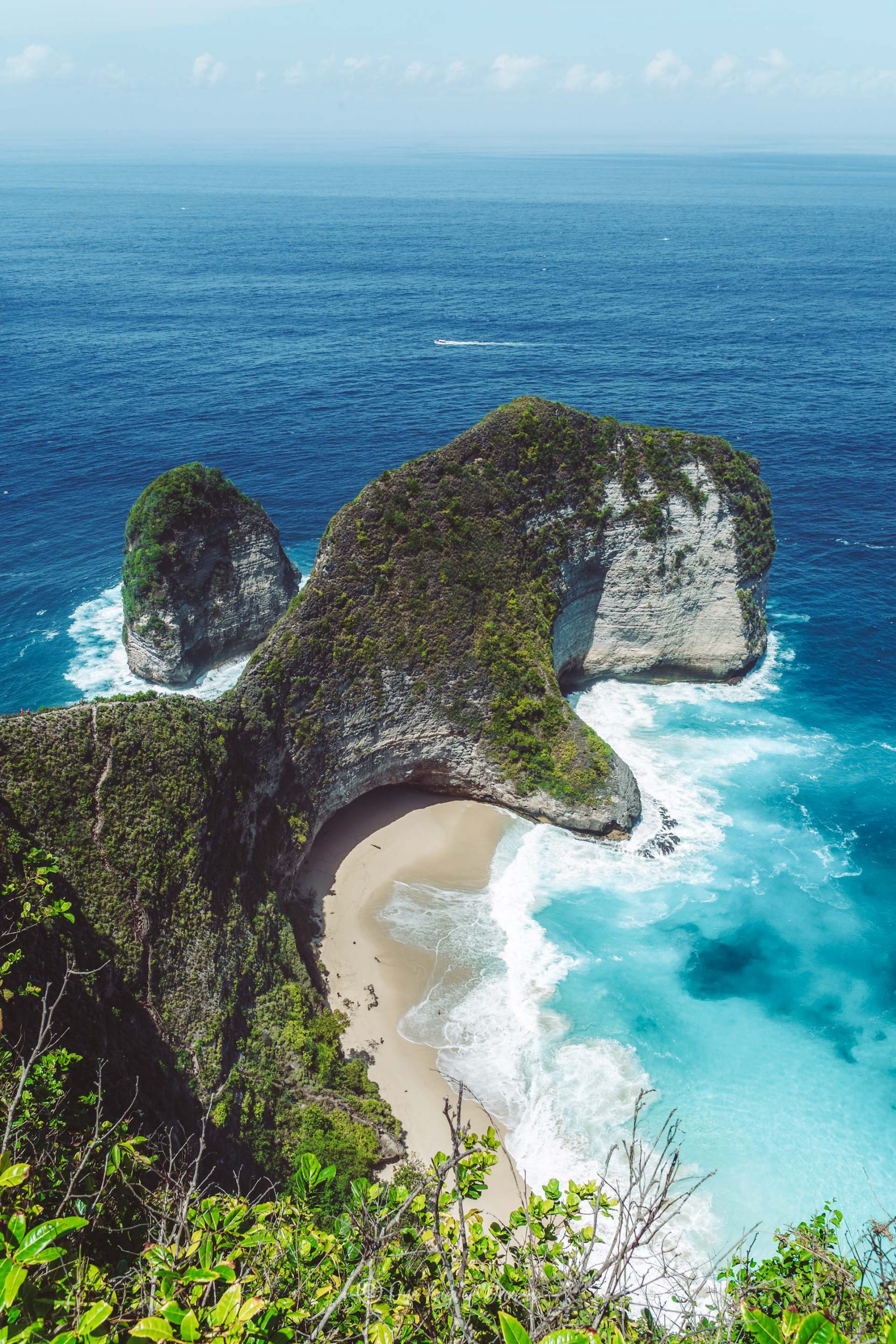
The sites which we would absolutely recommend include the view over Kelingking Beach from the cliff above, the Broken Beach and Angel’s Billabong.
Top Tip: Be extra careful on this beautiful island as many paths surrounding the cliffs are very steep and not well maintained. The sea is also very powerful, so always follow local safety guidelines!
You will also have the opportunity to do some snorkelling through the clear blue waters. Here you can witness the incredible wildlife which calls this crystal clear ocean home. We recommend that you spend the night on this island to give you enough time to explore the incredible diversity that this place has to offer!
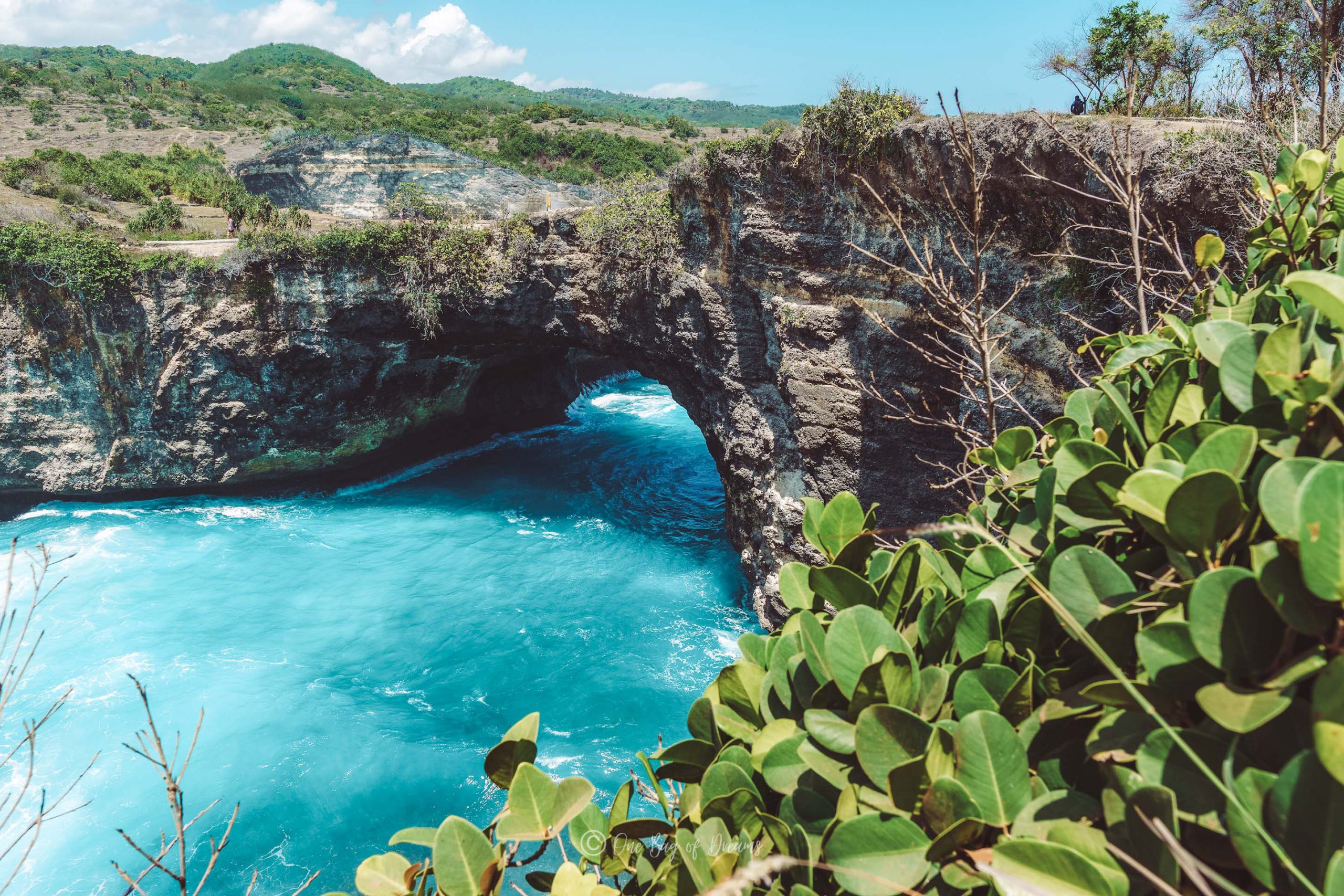
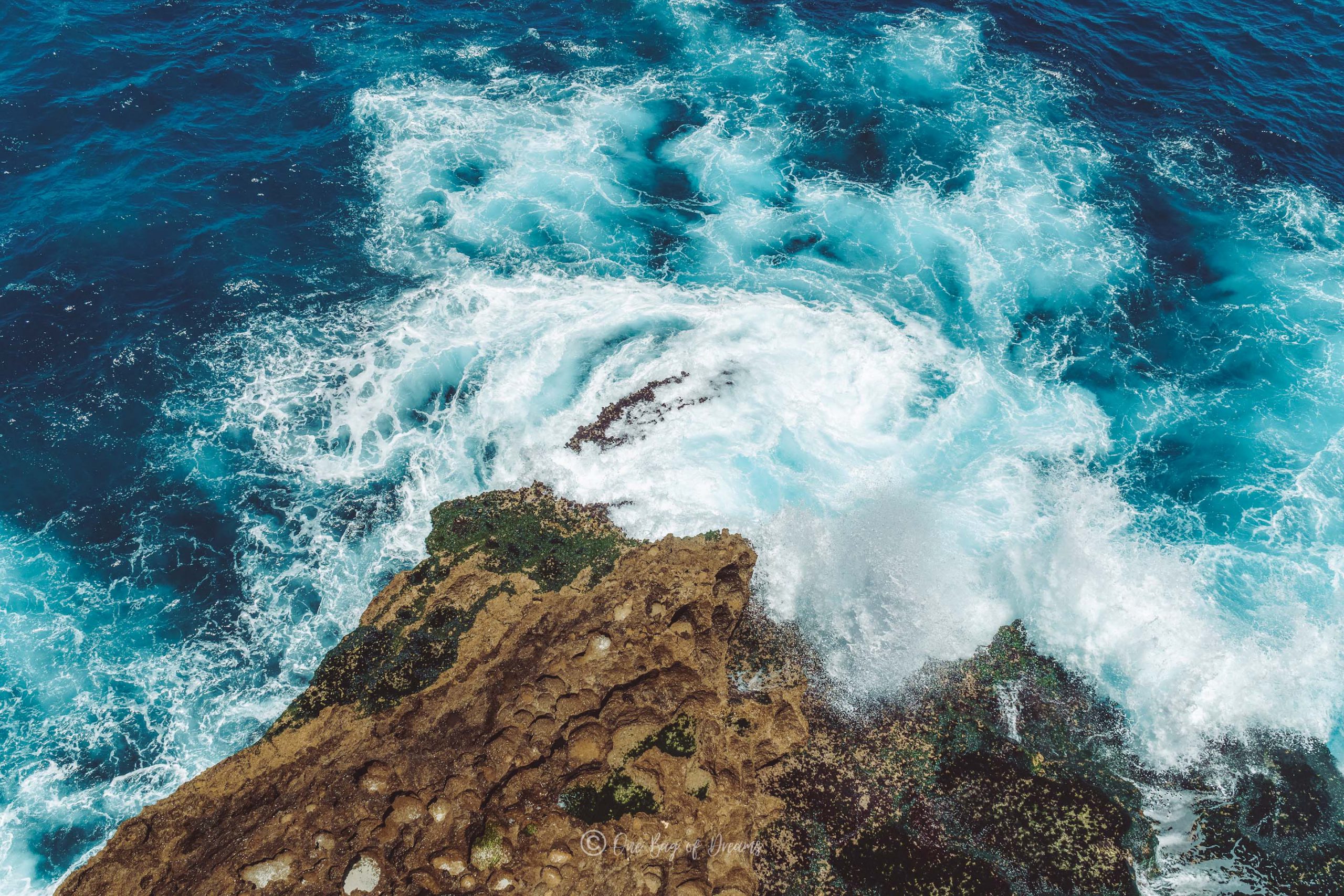
Optional Add-on: If you have some extra time during your stay in Bali, we recommend that after you have seen Nusa Penida, you make a stop at Nusa Lembongan before heading back to Bali. In Nusa Lembongan, we recommend that you relax and unwind on the Dream Beach, maybe drink a cocktail or two and soak up the sunshine.
Before sunset, walk over to Devil’s Tear, a section of Lava which sticks out from the island. Here you can witness the incredible sunset. After watching this magnificent sunset, you can overnight on this little island.
First thing in the morning, head to the yellow bridge for a photo stop, and witness the hustle and bustle of everyday life on this island, before heading out to sea for a snorkel tour.
Taking a snorkelling tour from Nusa Lembongan is a great opportunity to see manta rays. A snorkelling tour to see the manta rays from Nusa Lembongan will cost around 405,000 IDR (27 USD). The tour will have multiple stops for lots of different wildlife and will last for most of the day!
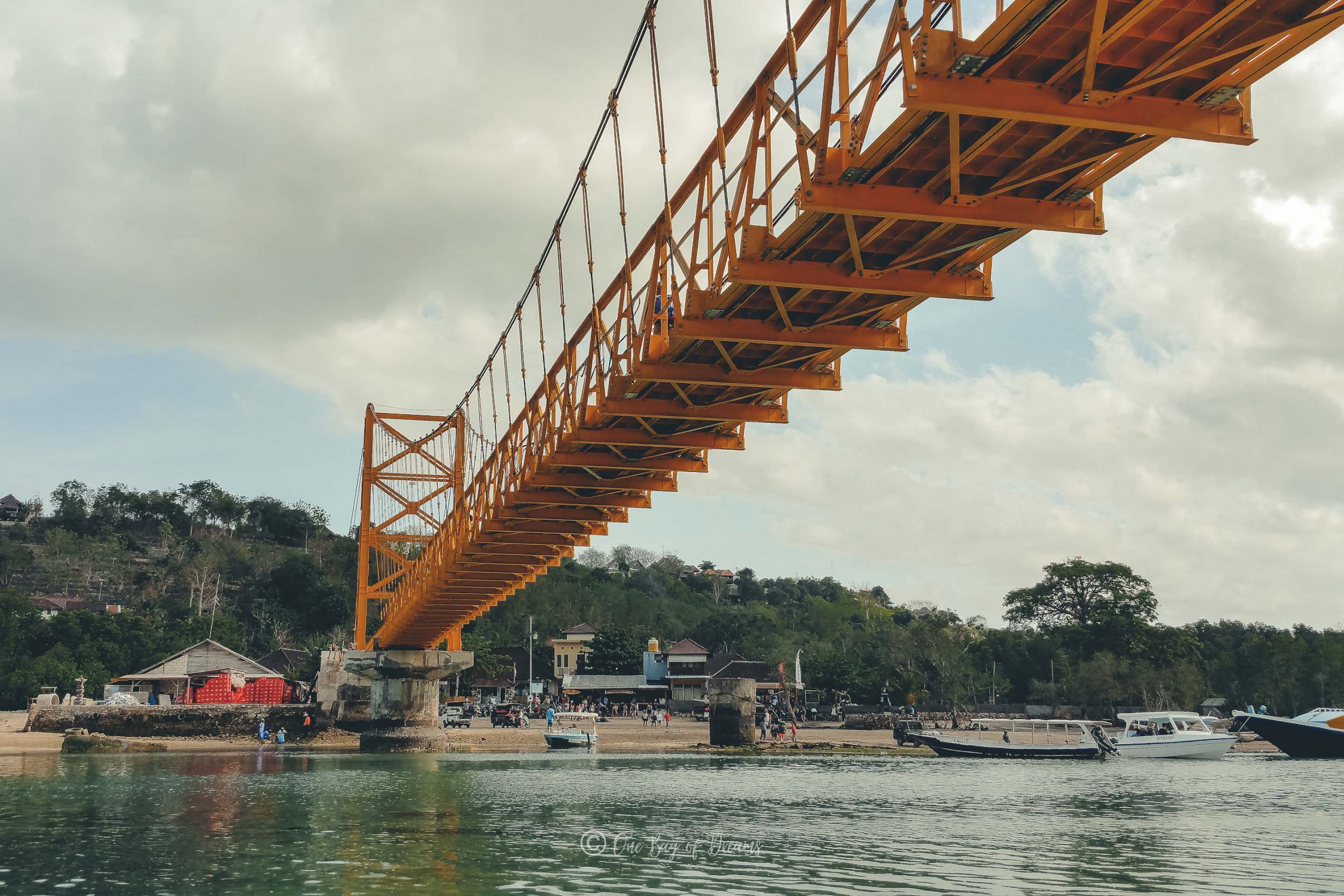
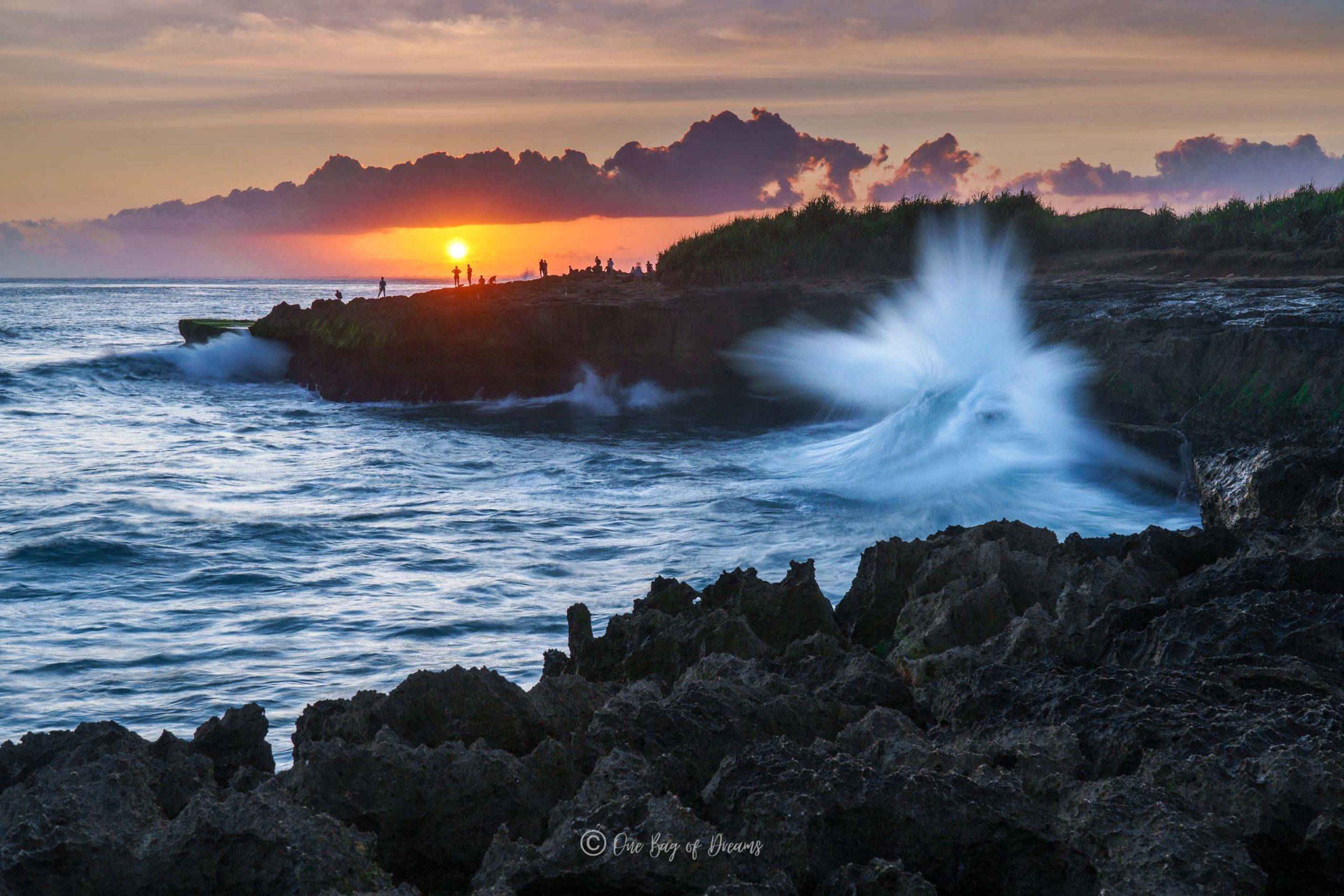
Day 4: Relax and Unwind at the White Sand Beach
This beach was a firm favourite for us. The contrast on this beach is truly a sight for sore eyes. The volcanic, black rocks rest on the glistening white sand.
Despite the tranquil appearance of the sea on this beach, the waves are powerful. The size and power of the waves make them incredibly fun, but only for strong swimmers!
There is also the opportunity to eat fairly cheaply at the Warung (traditional Balinese eateries, often very cheap) on the beach. At the Warung you can enjoy fresh fish and a nice, cool beer. A lovely way to relax and unwind after a busy few days.
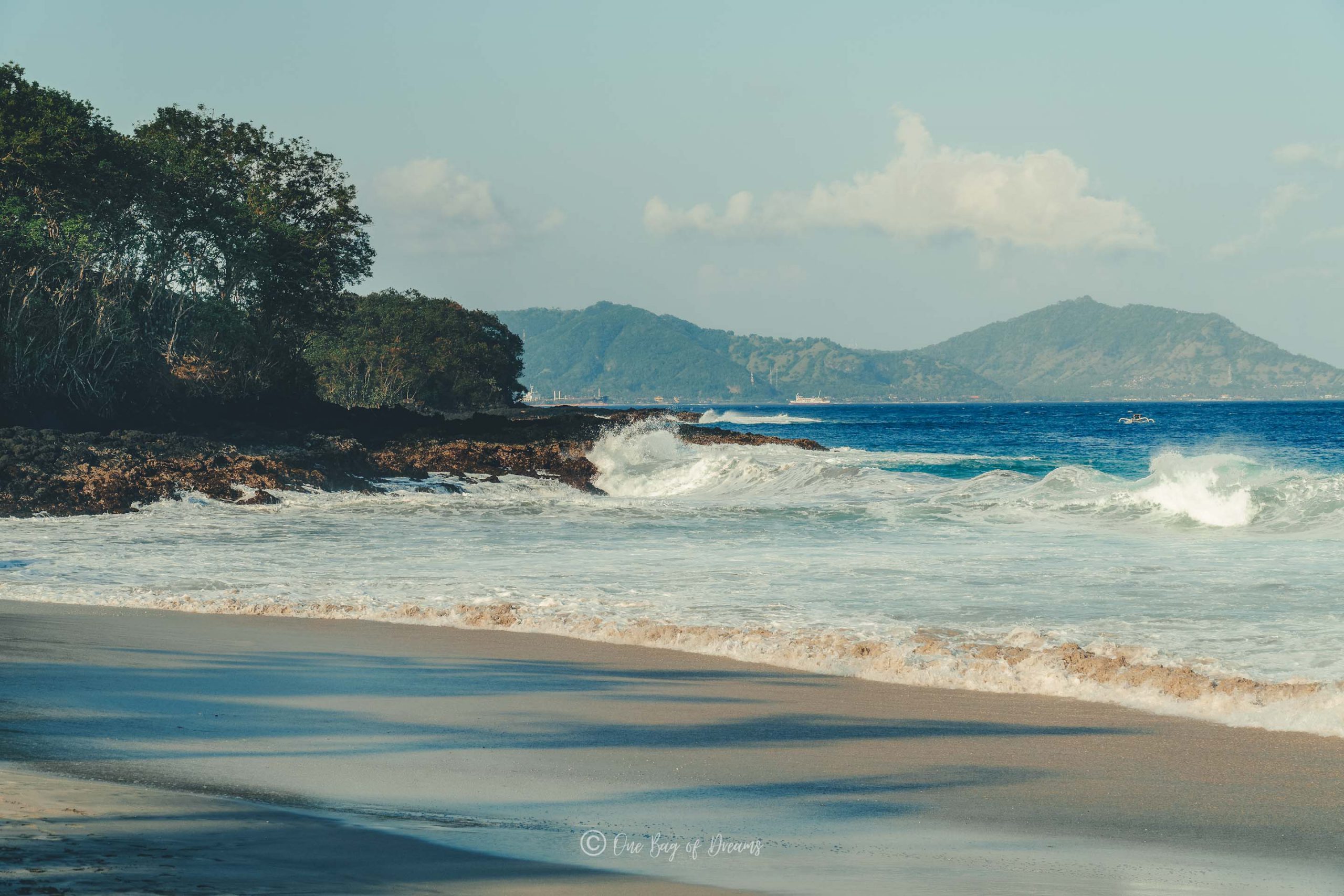
Day 5-6: Explore Ubud
Ubud is a must-see when visiting Bali. As the cultural hub of the island, this town offers something for everyone. Whether you are a fan of cultures and customs or vegans and vinyasas (yoga), Ubud has something for you!
We recommend exploring the town itself and strolling through the various markets. The products vary greatly from starkly traditional Balinese products to tourist souvenirs and trinkets. This means that it is important to keep an open mind when exploring these markets.
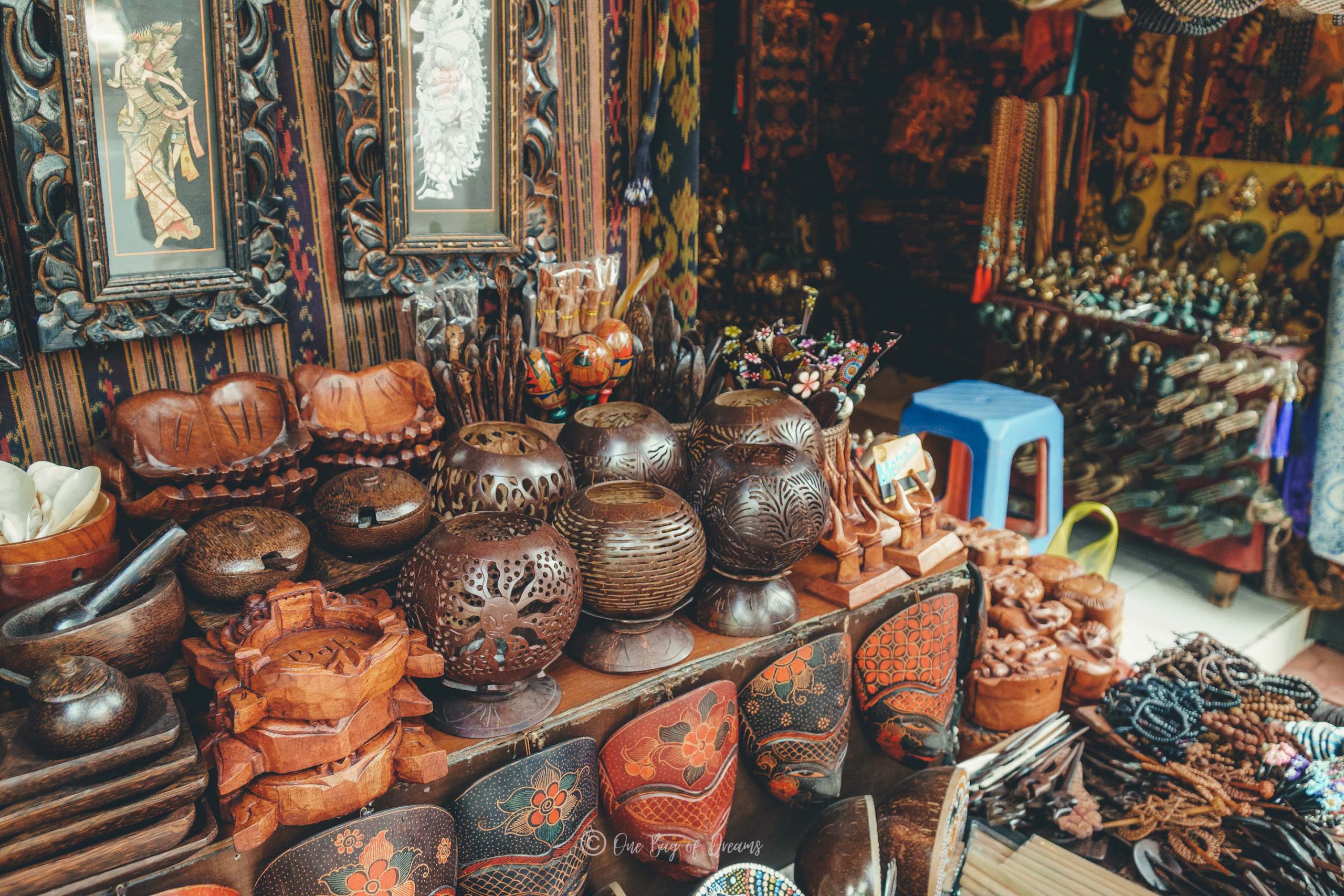
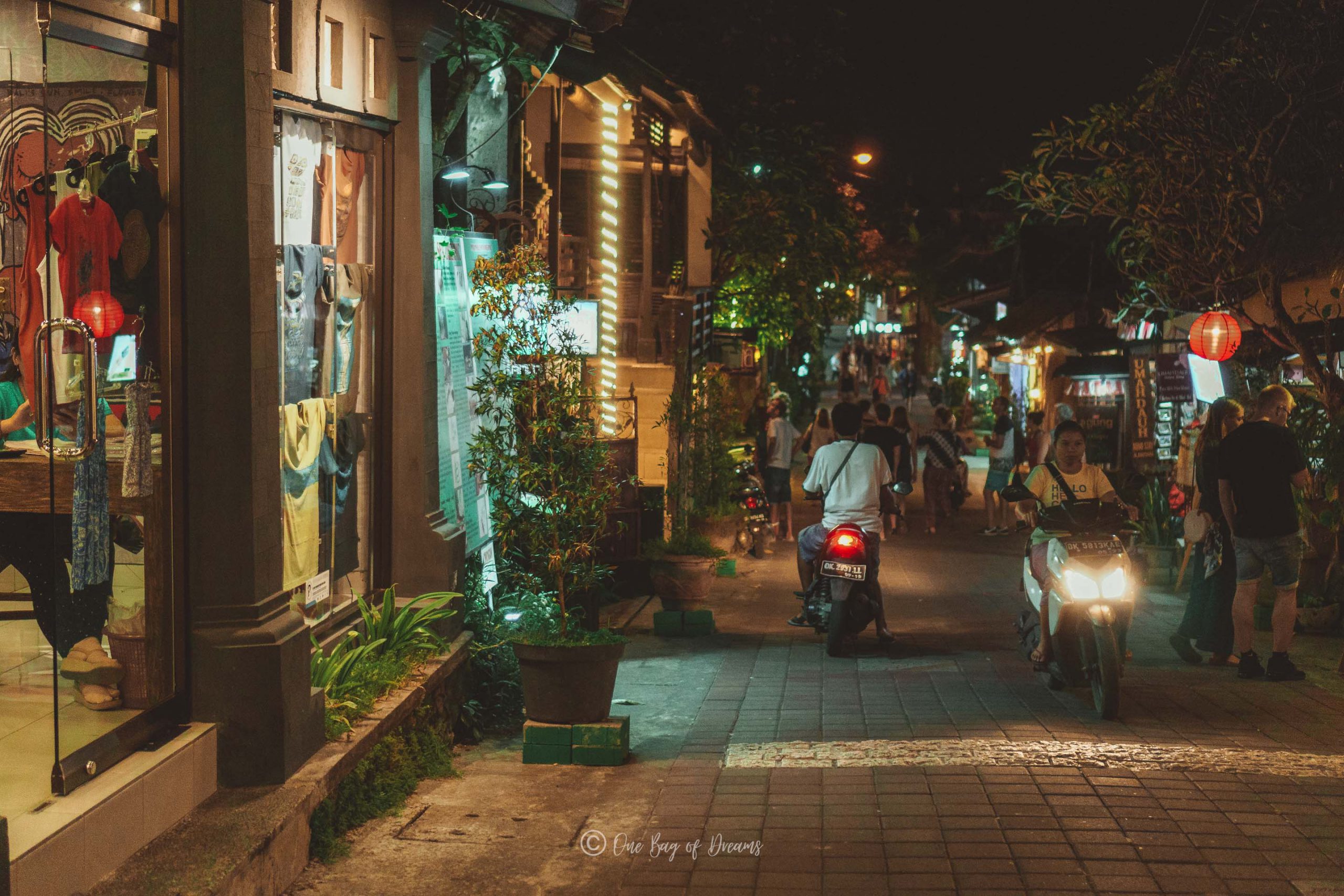
In need of some relaxation? In Ubud, there are plenty of small establishments offering traditional Balinese massage. A massage is always something very special when travelling, but if you are used to European massage standards- ask them to be gentle!
There are some other, very special residents near Ubud. If you are feeling brave, hide your valuables and head over to the Monkey Forrest in Ubud. This forest is a sanctuary for the macaca fascicularis monkeys. This forest is an important conservation project for the local people and is home to hundreds of these monkeys!
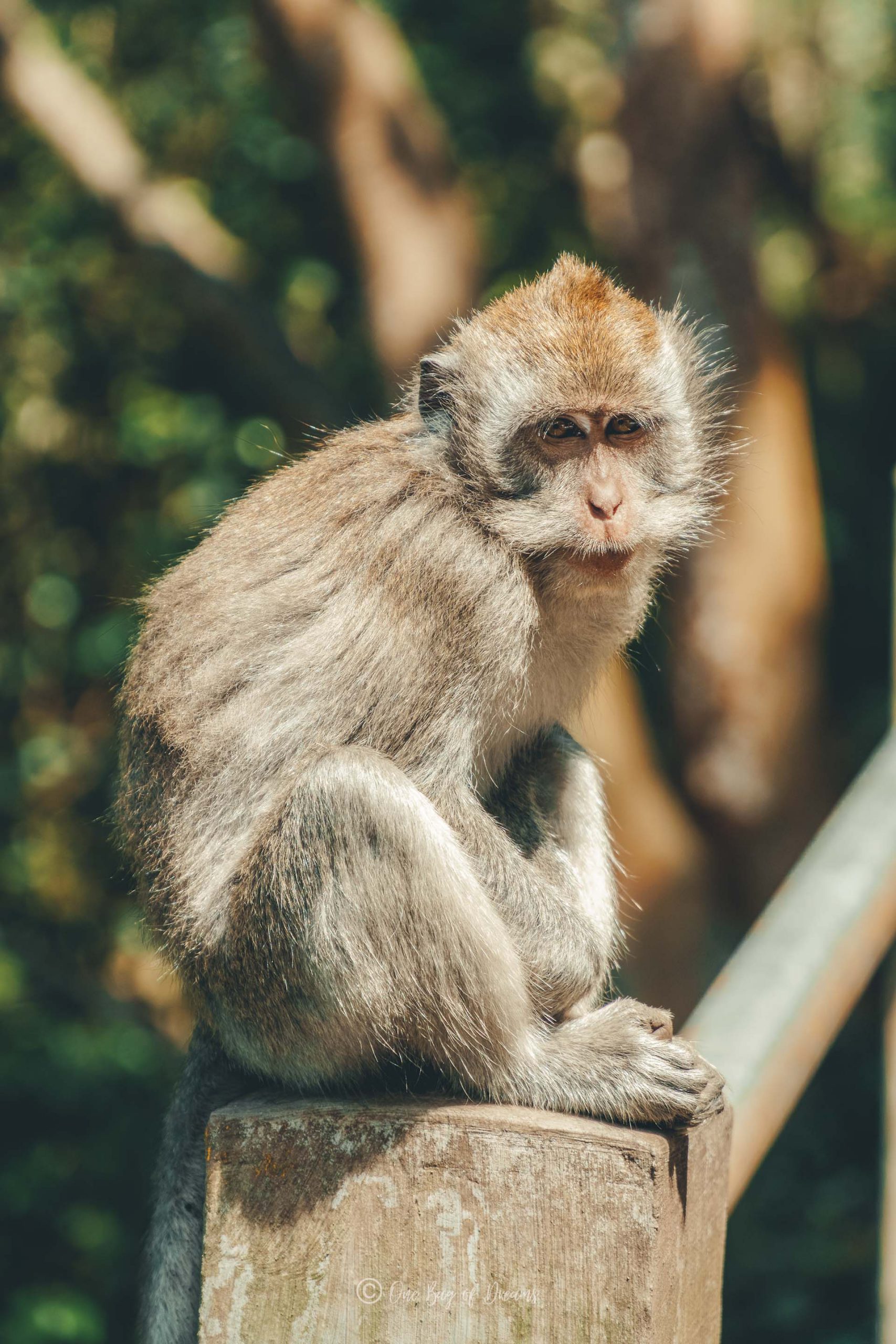
Top Tip: If you are looking for some extra adventure, nearby Ubud is also a great spot for wildwater rafting, but beware of falling coconuts!
Day 7: Visit the Goa Gajah Pura and Goa Lawah Temple
Just outside Ubud, you will find some of the most precious temples in Bali. Within a 10 minute drive from Ubud, you will come to the Goa Gajah, also known as the Elephant Cave. The cave appears to have been carved in the 11th Century, therefore the historical significance of this cave cannot be understated. The entrance fee to this temple includes the use of a sarong and waistband which is mandatory for both male and female visitors.
Top Tip: If you are looking to purchase a sarong as a souvenir, there are many local people selling beautifully made sarongs by this temple. Don’t forget to bargain!
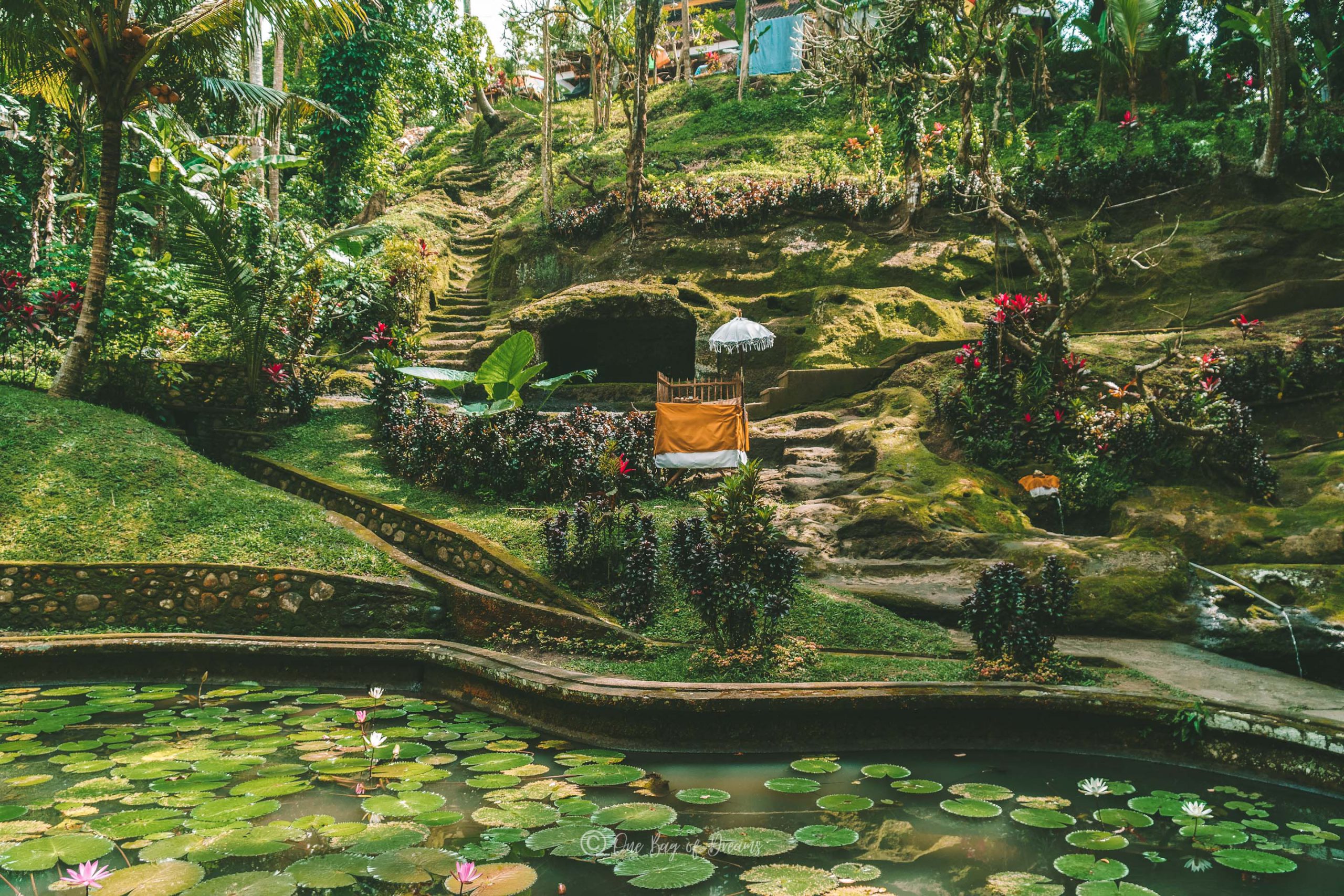
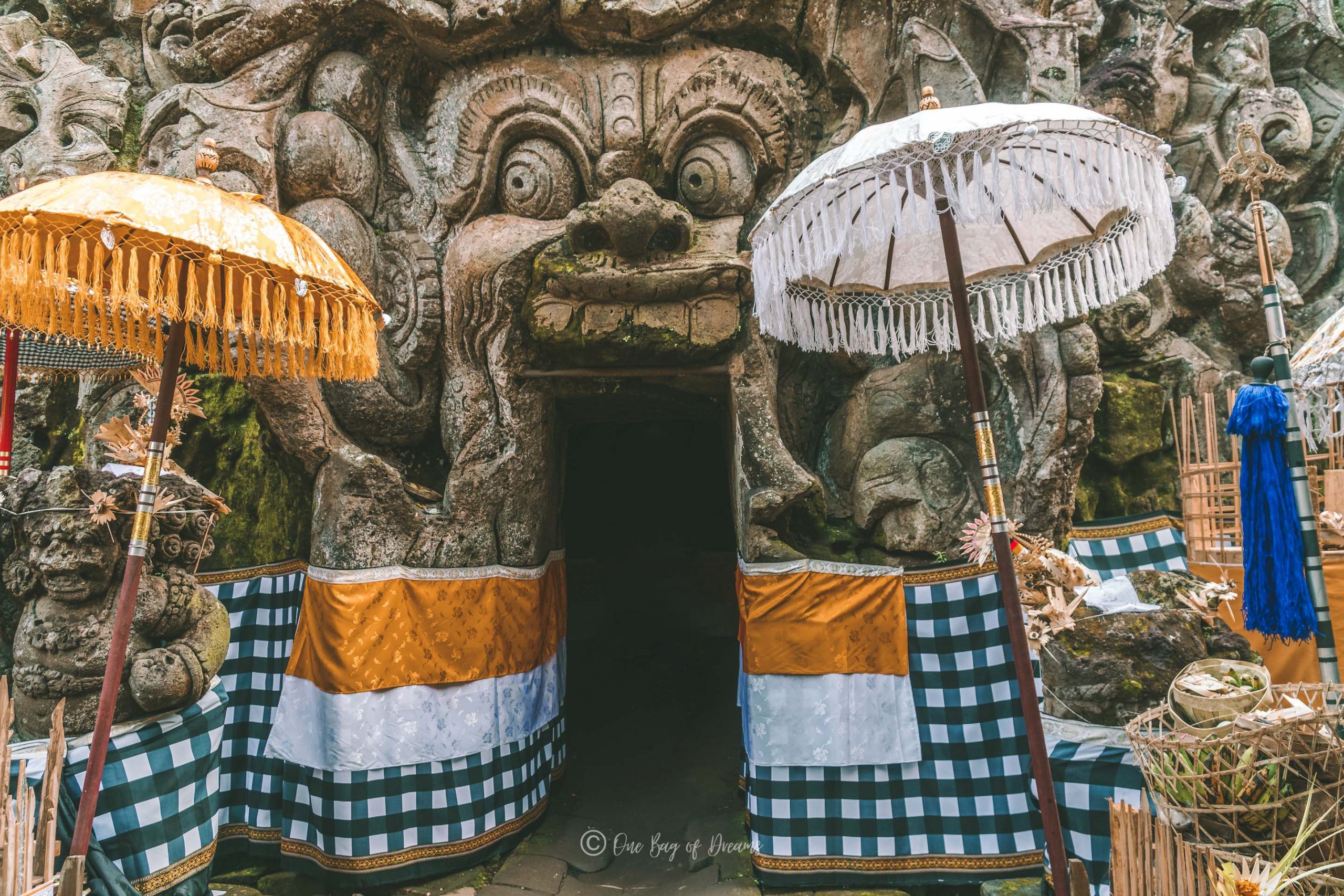
Exploring the extensive grounds of the Elephant Cave Temple is also charming. Nature and spirituality come together at this cave and a walk through the trees and by the stream is very tranquil and more than worth the extra time on your visit.
After taking in this amazing temple, head over to the Goa Lawah Temple. The Goa Lowah Temple, also known as the Bat Cave Temple sits on the east coast of Bali, approximately a 30-minute drive from the Goa Gajah Pura Temple.
The Bat Cave Temple really does live up to its name, playing host to a large colony of bats. The cave itself is considered holy and it is forbidden to enter, however, a walk around this temple provides a fascinating insight into the Hindu faith in Bali.
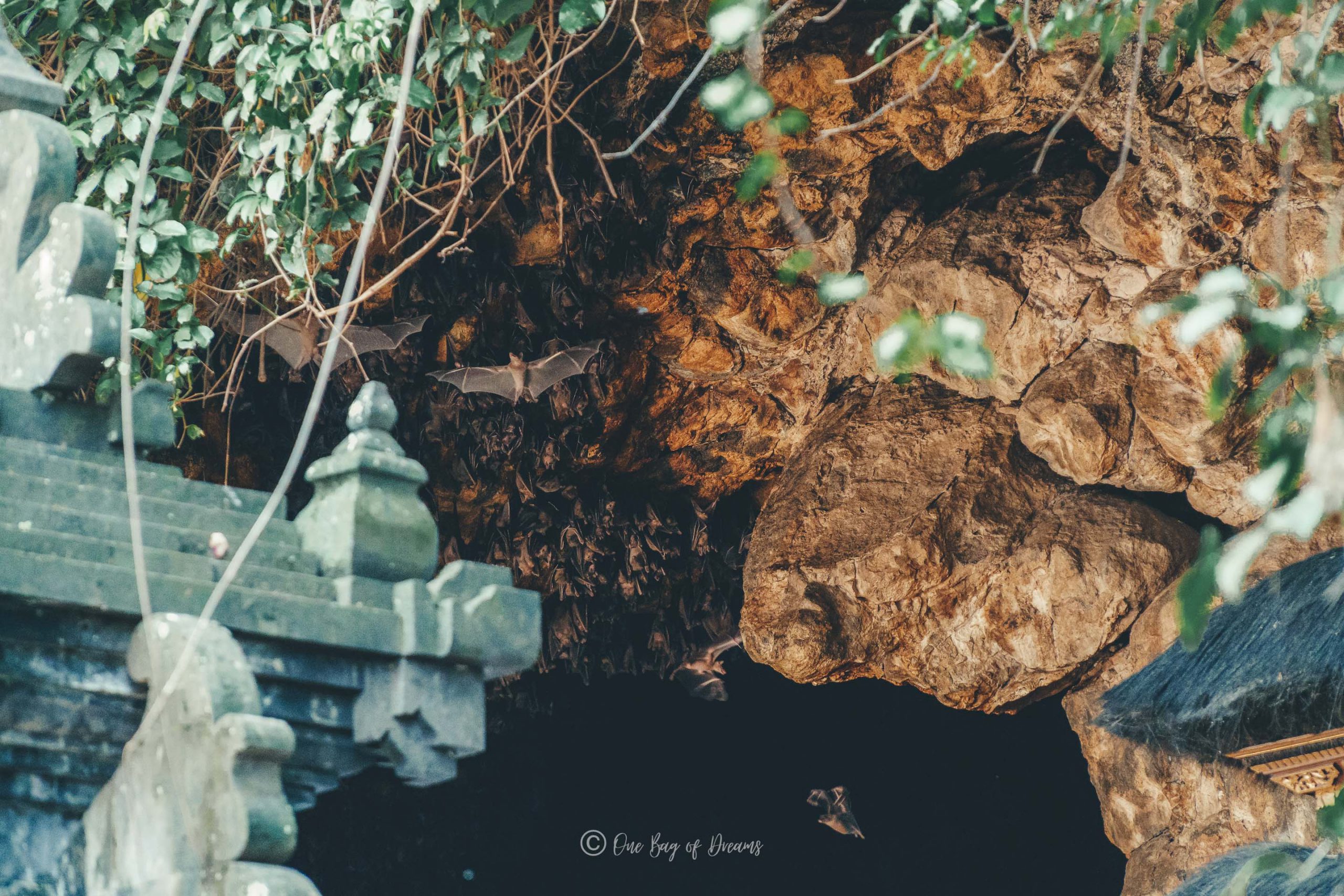
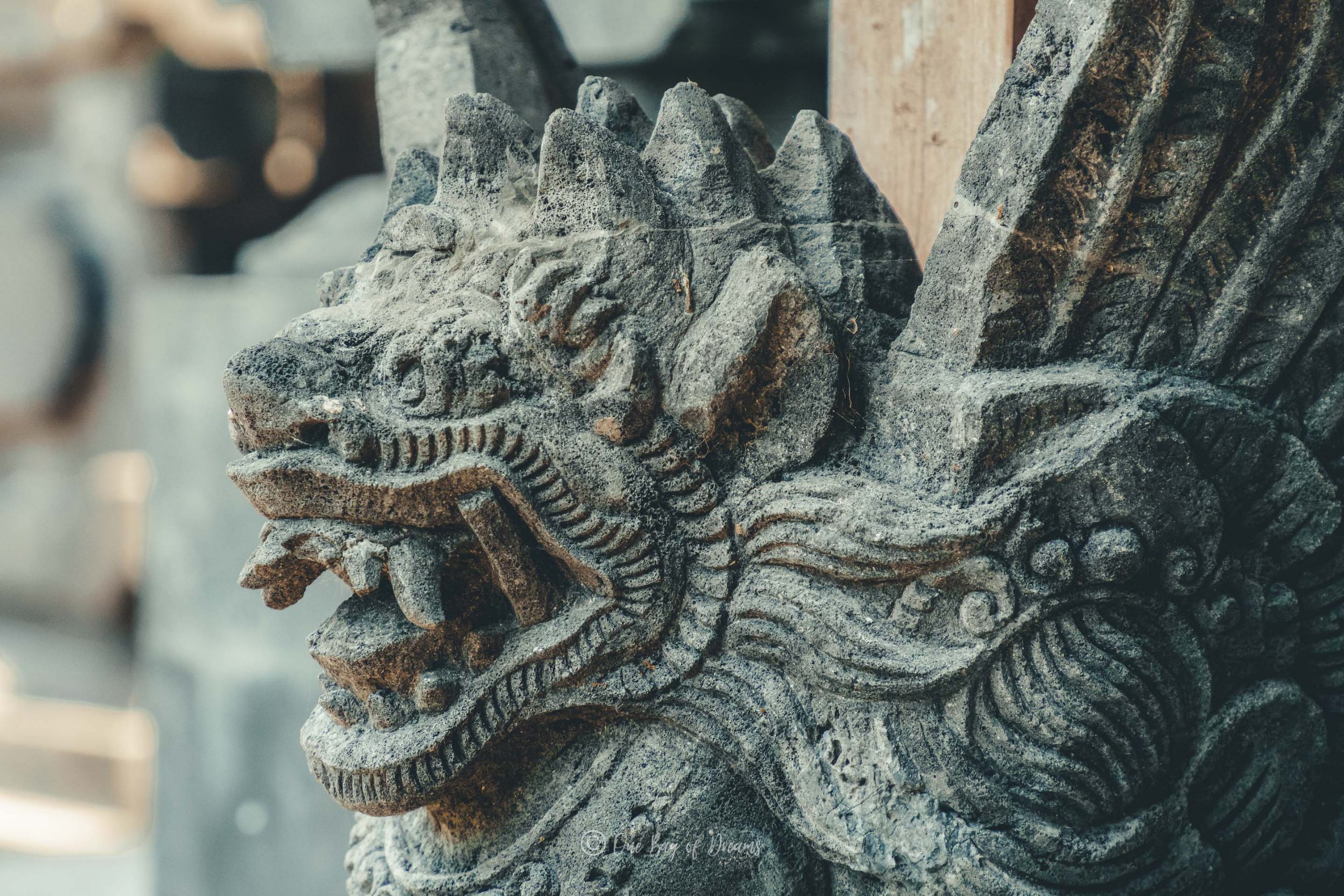
Travel Diary: Read about our Experiences Travelling Around Bali
Week 2 - Let's get Physical!
In the second week in Bali, we recommend that you get stuck in this incredible country. The best way to see incredible nature? Get out and explore!
Day 8: Climb Mount Batur
Get yourself a guide and follow them up Mount Batur. This is an active volcano situated in the Bangli Regency. Yes, you read correctly, ACTIVE volcano.
The hike up the volcano is at a moderate level, nonetheless good boots are recommended! The hike will take you around an hour and a half depending on your speed and how many breaks you take. Most guides will provide you with some breakfast before you head up the volcano, but this will be early! At approximately 3:30 am you will start the hike. All this might sound a little crazy, but the sunrise over lake Batur (around 5:30 am) will leave you in awe!
Top Tip: We would definitely recommend climbing Mount Batur with a guide. Local people have been very concerned about the safety of tourists. The hike also takes place mostly in darkness and therefore the risk of getting lost is very high!
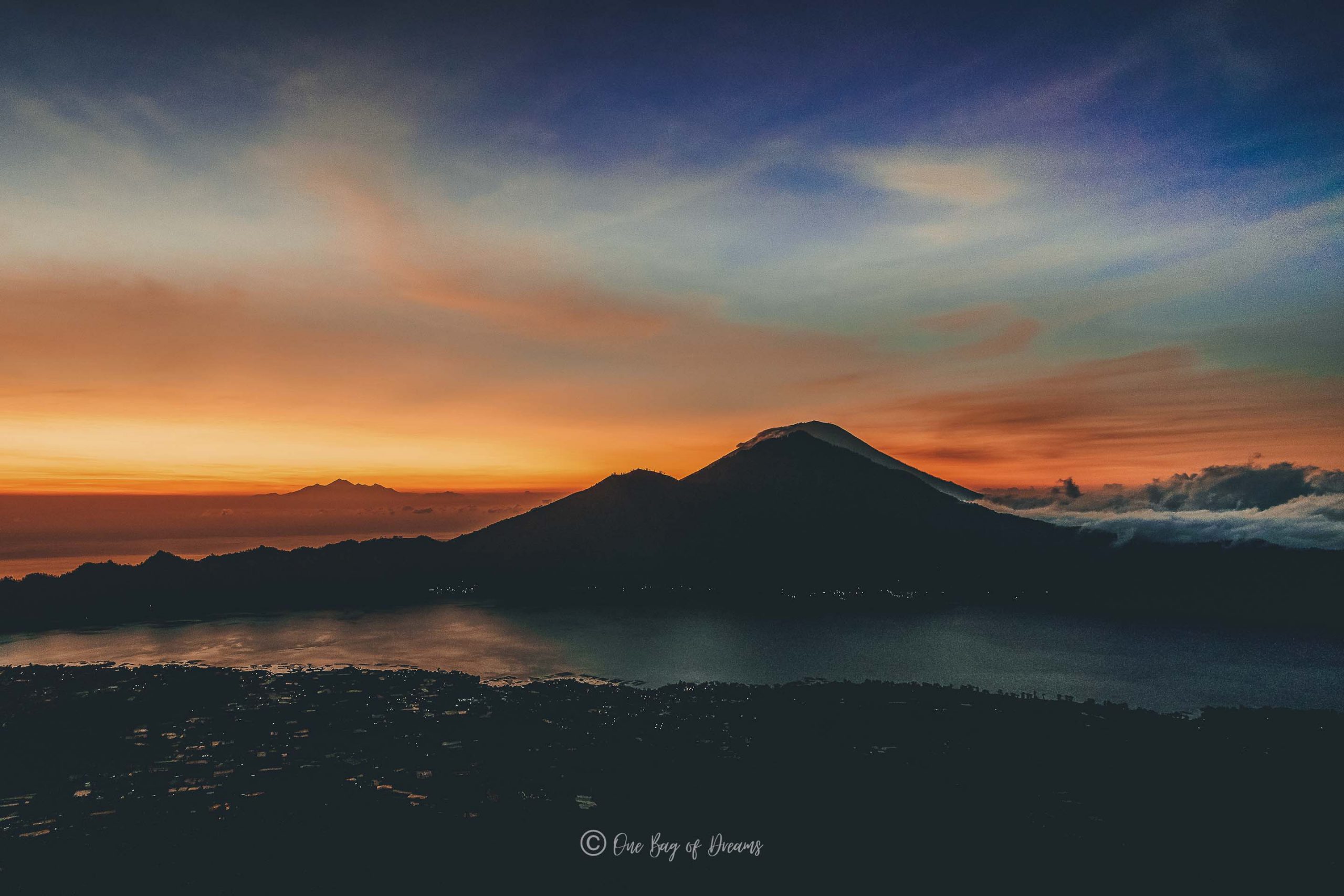
Day 9: Sekumpul Waterfall with Overnight in Lovina
The Sekumpul Waterfall is a wonderful place to visit in Bali. It is a little off the beaten track, but, if you are feeling adventurous, it is more than worth the effort!
You can park nearby the waterfall, but the walk down is still steep and windy. When you reach the bottom of the waterfall, you will look up and see the power of nature at it’s finest! What a sight to behold! You can even take a little swim at the bottom of the waterfall and pose for photos on the rocks. If you go around the corner, you can also find another, secret waterfall. At this waterfall, there are fewer tourists and plenty of space to relax and swim.
Top Tip: Take some flip flops or waterproof shoes with you to the waterfalls. There are a lot of sharp rocks, therefore, it is always a good idea to wear shoes around the water!
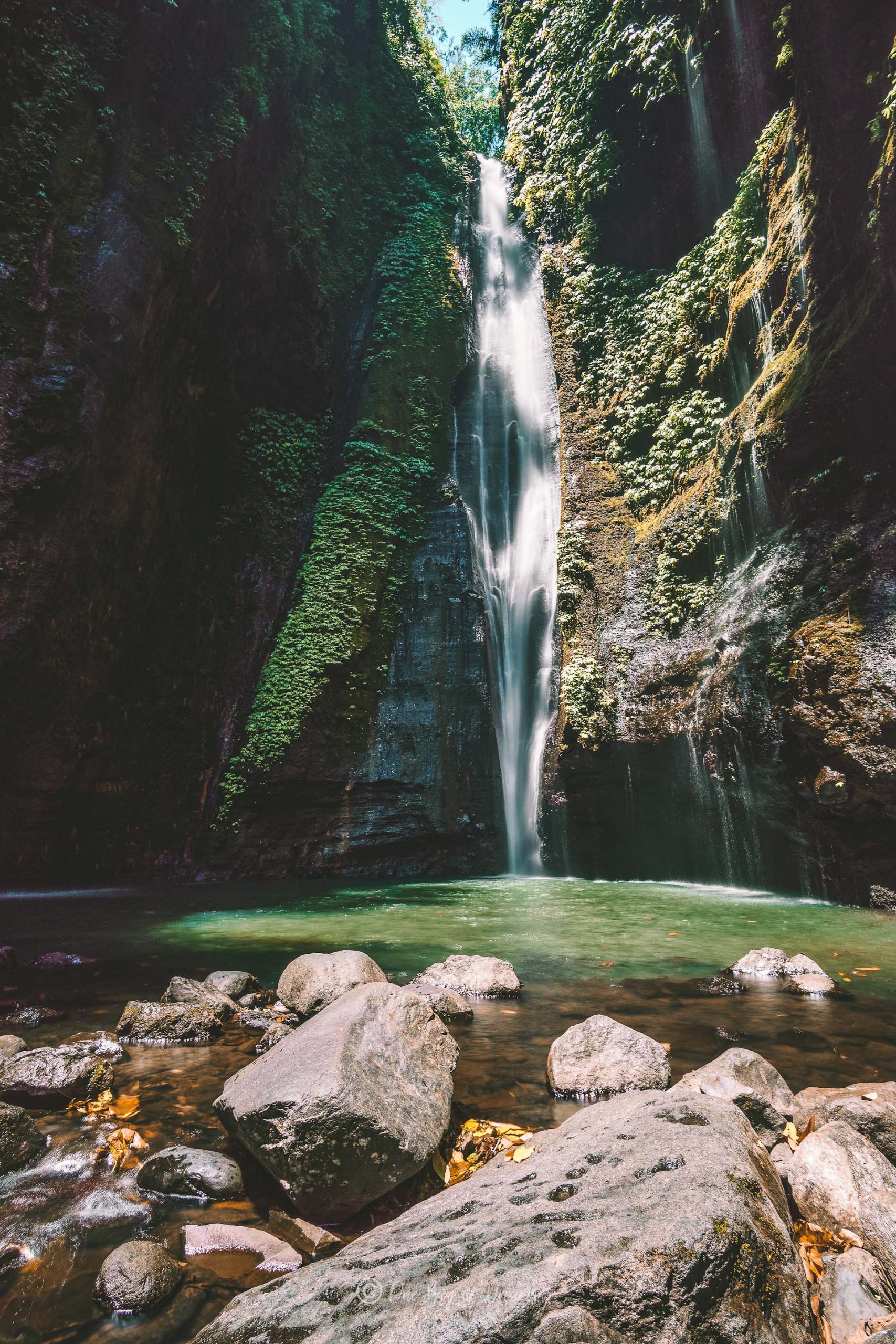
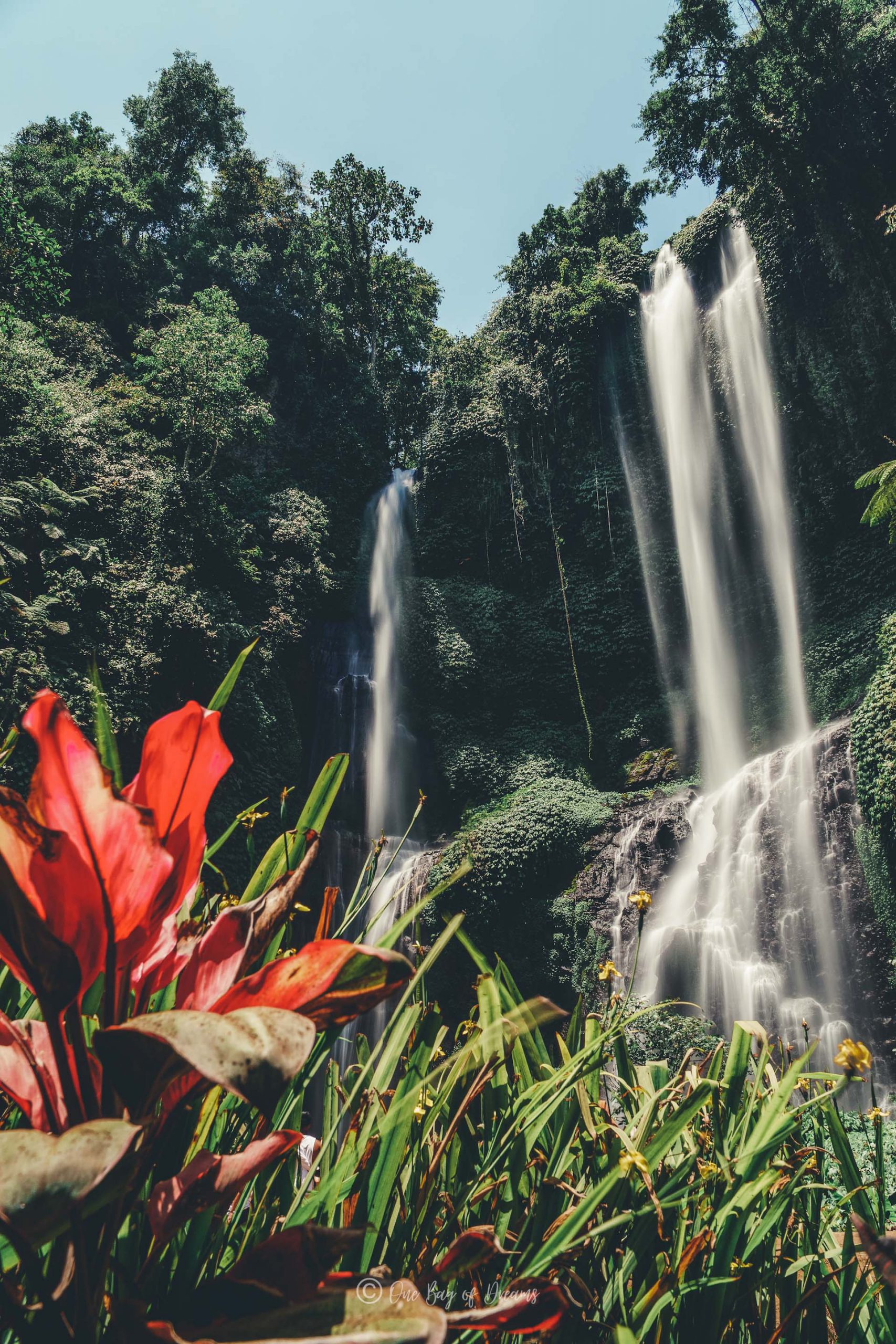
After soaking up this incredible place and taking a walk around the surrounding area, we recommend that you head to Lovina. Lovina is a beautiful beach area consisting of many smaller villages. The waves at the beaches in Lovina are much calmer than those experienced at the White Sand Beach. We highly recommend sitting on the beach and watching the sunset over yet another wonderful day in Bali.
Day 10: Floating on the Waters of Bali
When visiting Lovina, it is almost impossible to not hear about the dolphin tours on offer there. Dolphins are beautiful creatures which can be found just off the coast of Lovina. However, when planning a tour, we ask you to enquire about how many boats will be following the dolphins at the same time. In our experience, dolphin spotting tours are often extremely busy and uncomfortable for tourists and wildlife alike. Therefore, always try to stick to sustainable practices and tour groups!
After spending the morning in Lovina. We recommend that you continue with this water theme and head to Pura Ulun Danu Bratan, a floating temple.
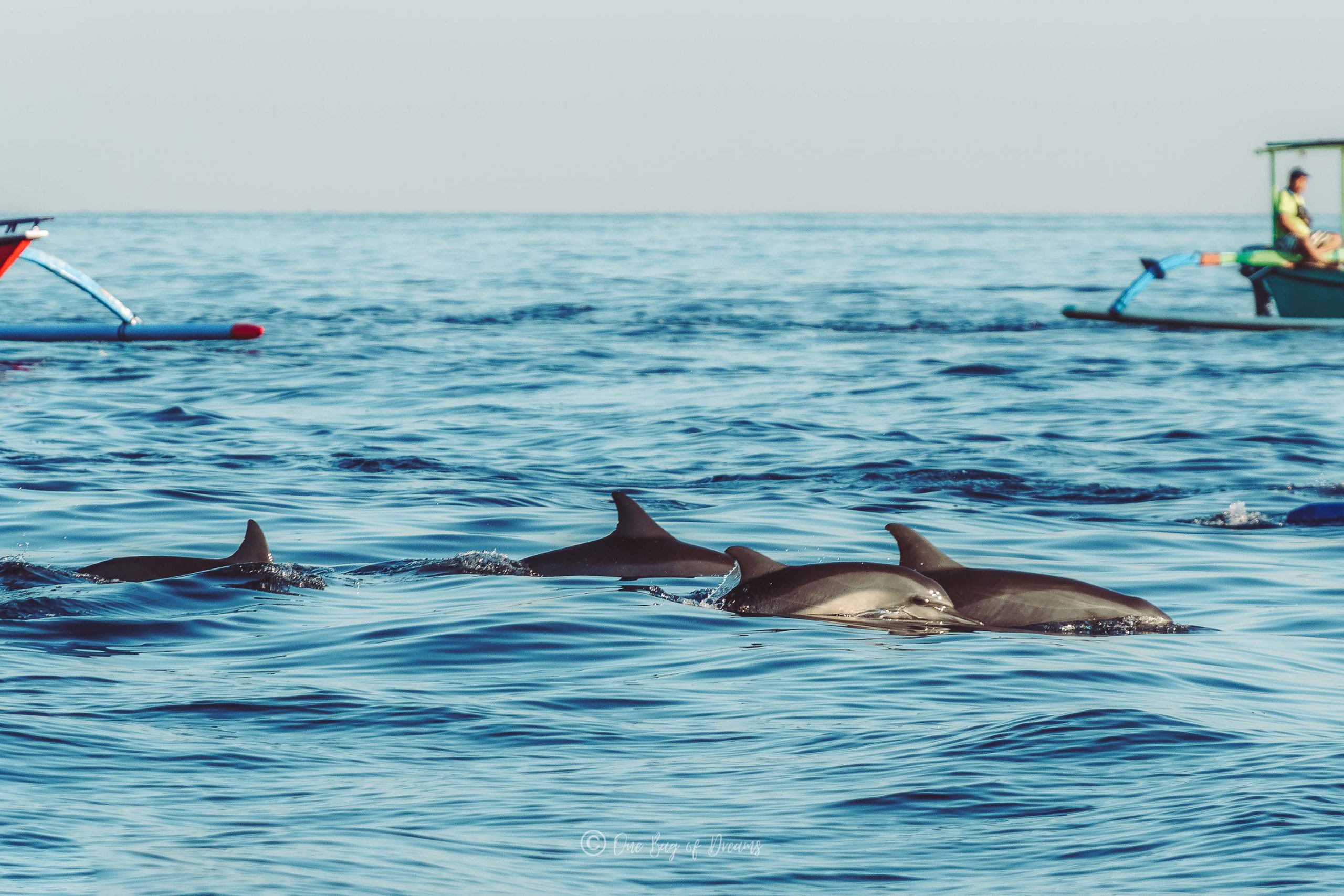
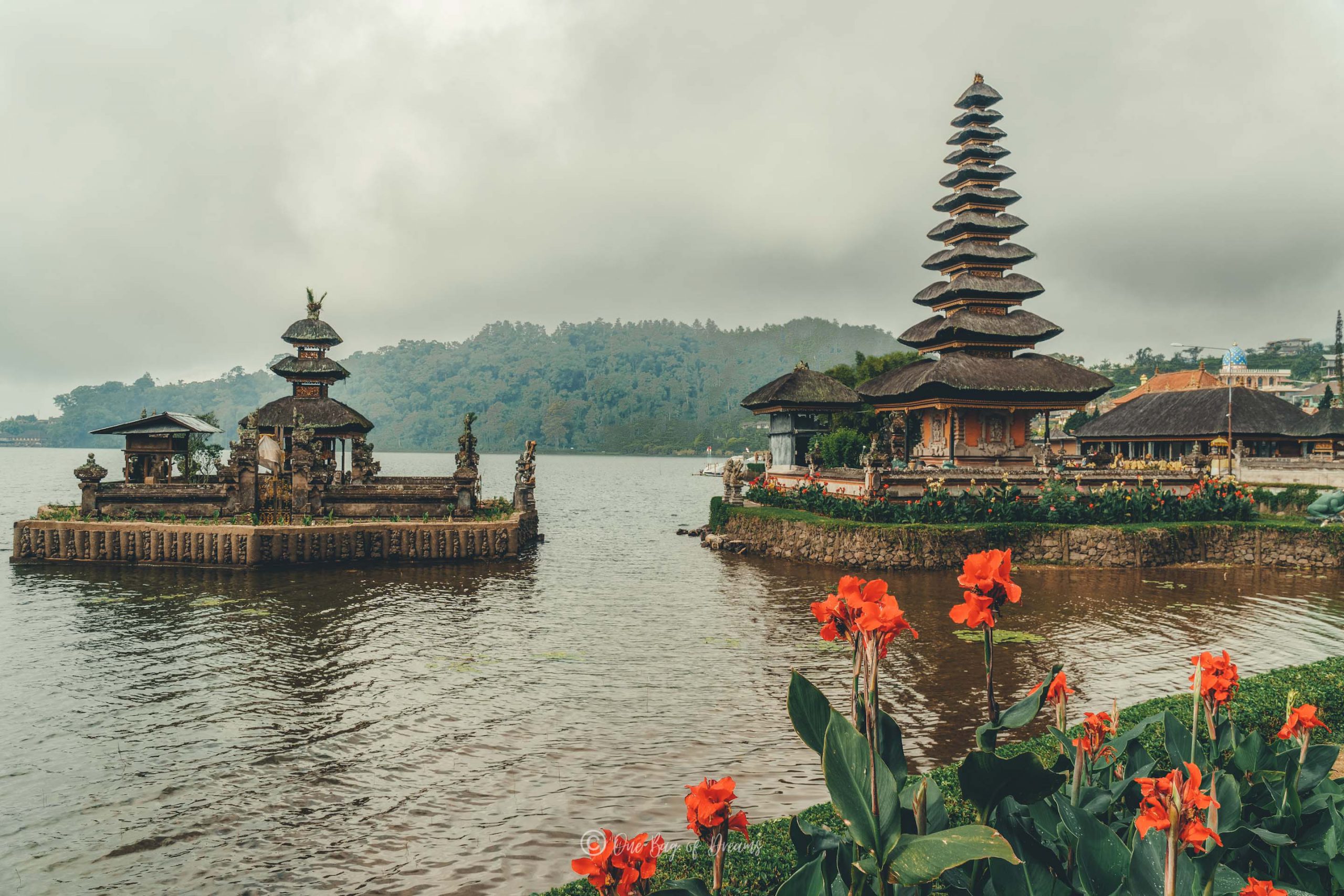
This temple is glorious. It sits in the mountains on the edge of the lake Bratan. The mountain location means the temperature is often cooler here than in the rest of Bali. The temple and the grounds are simply stunning, with many painted animals across the grounds adding to its charm.
The sights and sounds of this temple give it a deeply spiritual feeling. When the lake is at a higher level, the temple building truly appears to be floating on the water.
Day 11: Visit the Bedugul Traditional Market and the UNESCO Culture Heritage Site at Jalituwih
After an early start on day 10, for day 11 we recommend having a relaxed morning and heading over to the Bedugul Traditional Market. At this market, you will be able to try all sorts of fruits such as jackfruit, dragonfruit, passion fruit and mango.
The tastes and smells of this market will excite your senses! Although, we recommend that you stay away from the Durian… This strong-smelling fruit is not to everyone’s taste!
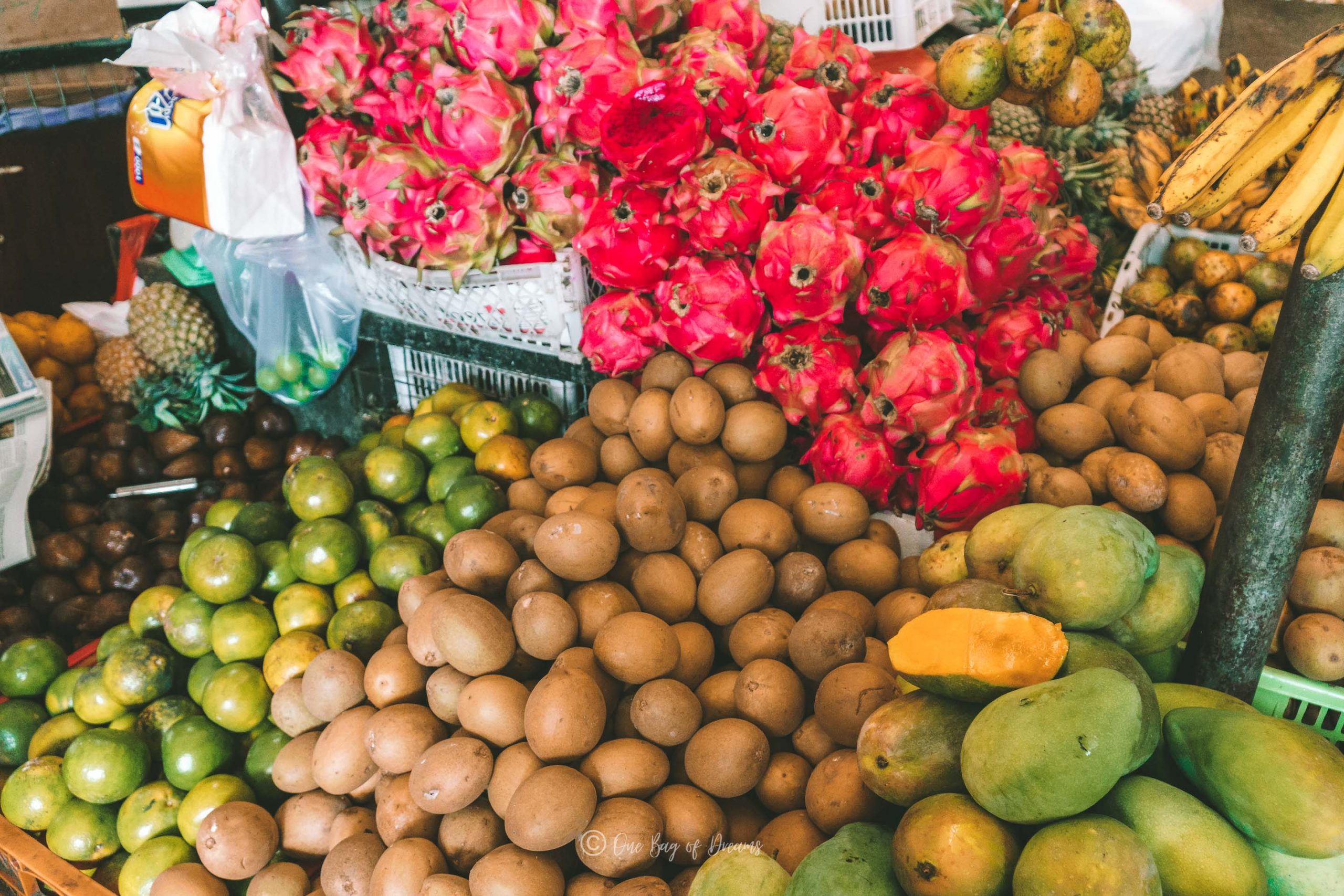
After a tasty morning exploring the Bedugul Traditional Market, head over to the world-famous rice fields and Jalituwih. The rice fields are Jalituwih are sensational.
The dreams you have had about Bali will be realised once you visit this special village. The rice fields of Bali provide any visitor with an immediate view of traditional Balinese agriculture and the scenery…. utterly stunning! The rice fields truly make for a one-off, authentic Balinese experience.
The great thing about Jalituwih village is that there are even some places to eat and stay, provided that these fit within the regulations protecting this magnificent sight.
Top Tip: When visiting the rice fields, wear good walking shoes, one step off the beaten track and your normal shoes will be ruined – trust us!
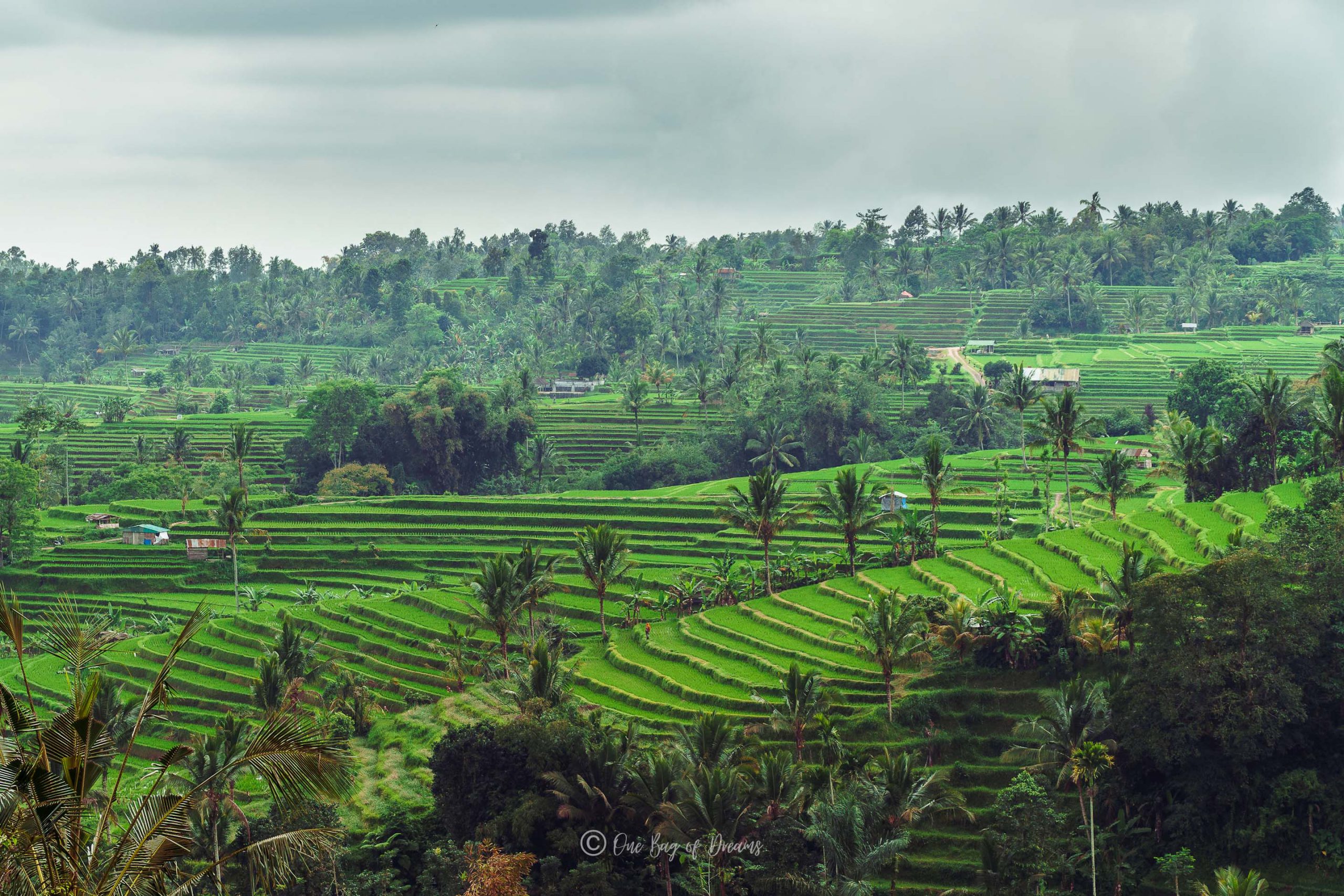
Day 12: An Early Rise for Tanah Lot
Jump out of bed early. For day 12 we recommend an early start! This way, you will arrive at Tanah Lot just as it opens. Arriving at this temple at 7 am is the perfect time to avoid the tourists and see the temple in all its glory. This temple is very important in Balinese mythology and within Hinduism.
The beautiful scenery at this temple and the powerful cultural significance make it an absolute must-see when visiting Bali.
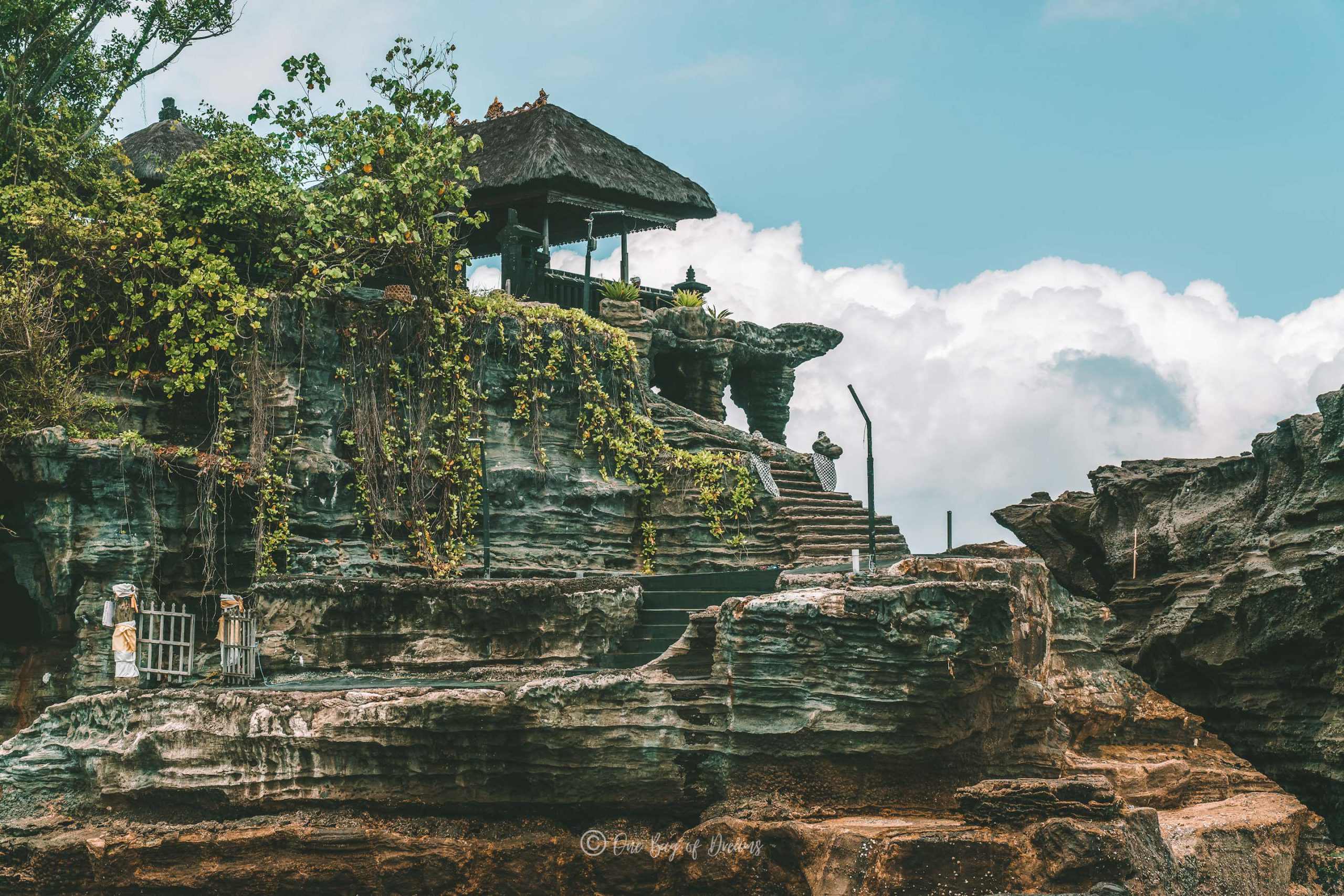
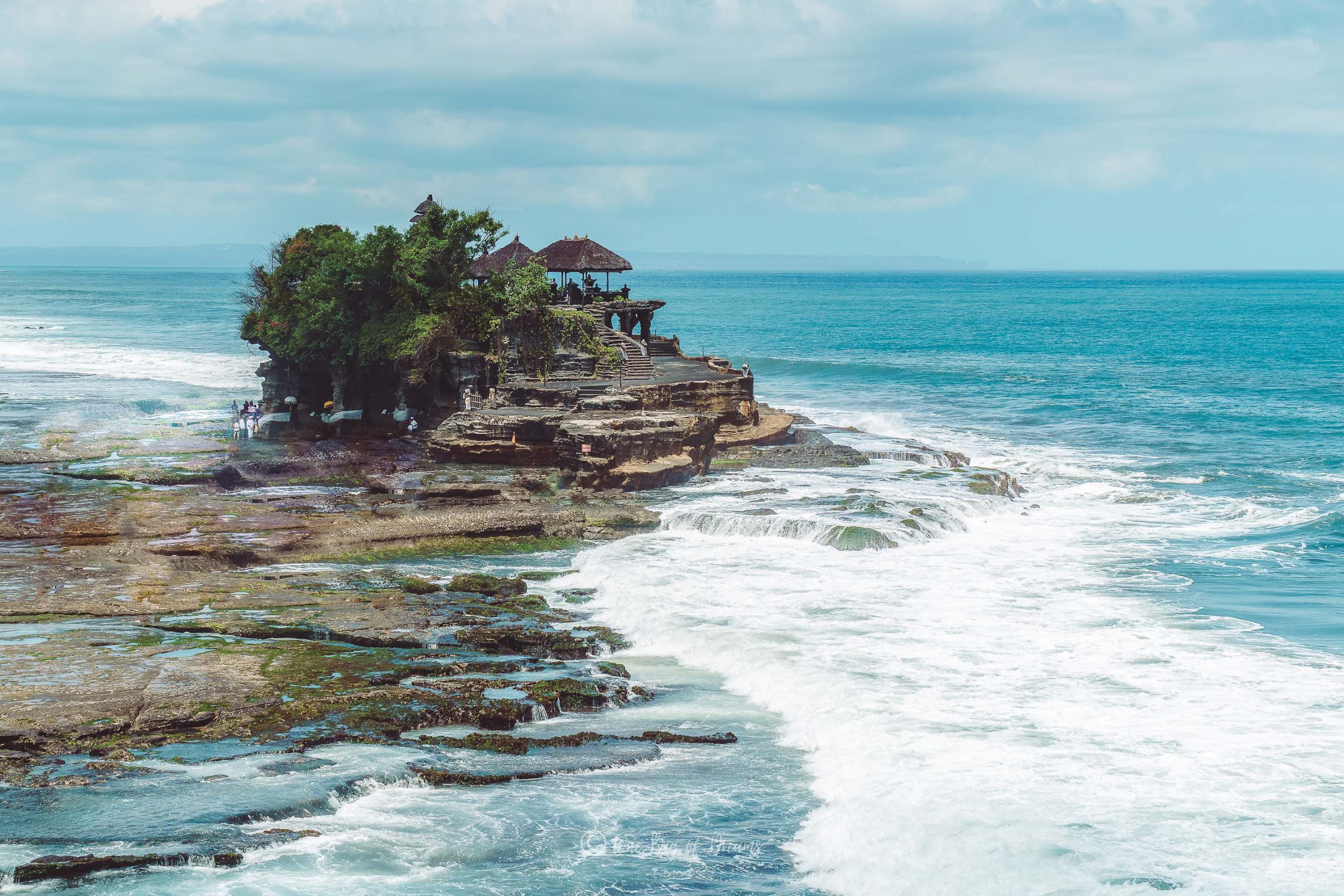
Following your morning at Tanah Lot, you should head over to One Bali Agrowisata. This place is perfect for wandering around and tasting new things.
One Bali Agrowisata claims to be one of the few places serving the traditional Luwak Coffee. You can enter this plantation, explore its picturesque location with stunning views, and learn about the production process of this exclusive type of coffee. You can also sample various sorts of teas and, for a small fee, the so-called Luwak Coffee.
Top Tip: If you are looking for that classic instagram shot, ask the staff at One Bali Agrowisata if they can show you where they swing is. Here you can take a beautiful picture with you hovering over the incredible scenary.
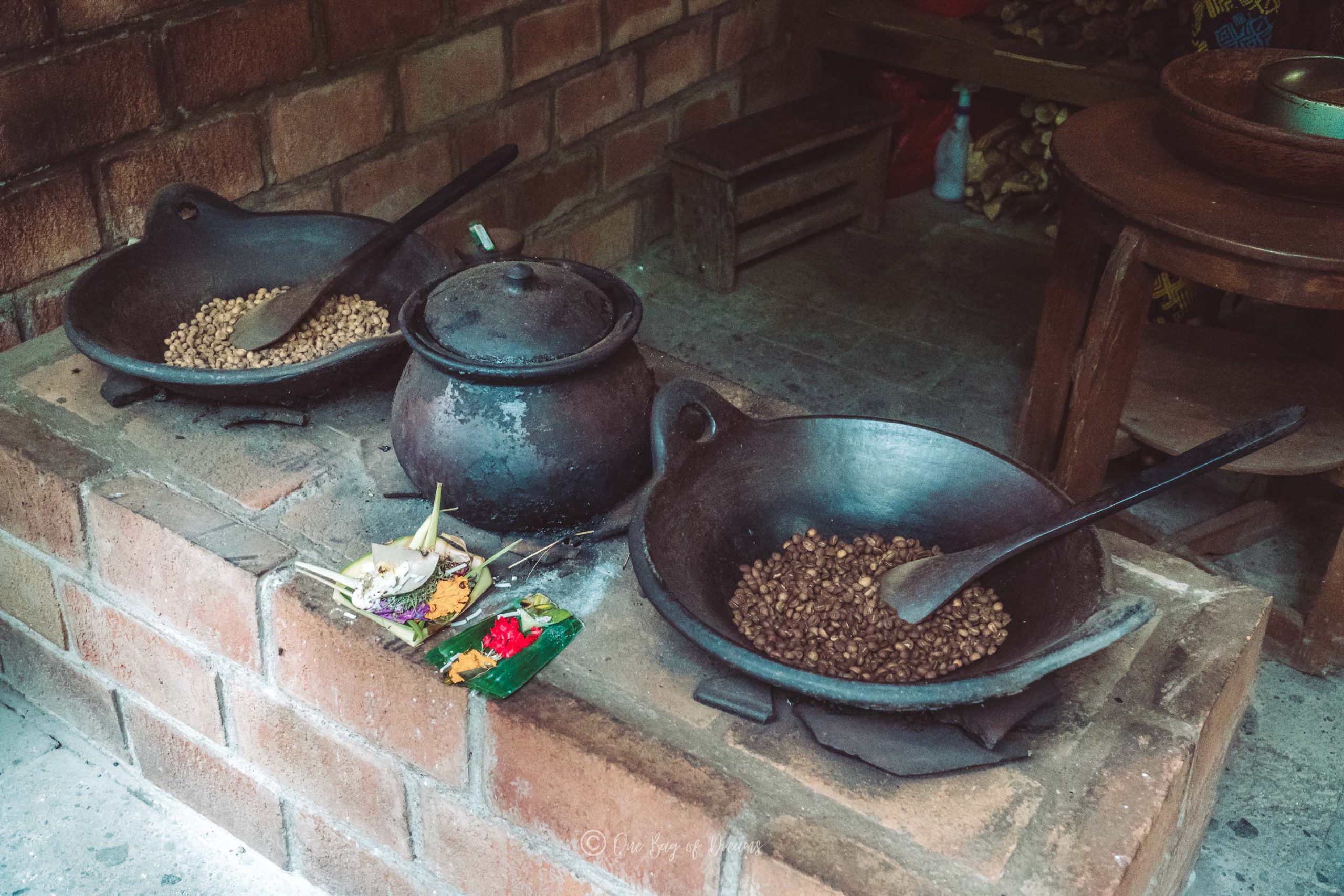
Day 13: Surfing and Soaking up Seminyak
If you still have some energy left after the sightseeing, we recommend learning to surf in Seminyak. The waves in Bali offer a great opportunity to surf. There are several surf schools in Seminyak. You can expect to pay around €20 (347,507 IDR) for a surfing lesson lasting two hours.
The waves at Seminyak are perfect for beginner and middle-level surfers as the waves are large enough to surf but not as large as some other spots on the island.
Another thing which for many people is the epitome of a dream holiday is the opportunity to ride horses on the beach. This utterly charming experience allows you to see this beautiful coastline from a different angle. This experience can be on the expensive side on the beach, expect to pay around €40 (695,014 IDR). This price does, however, often include the cost of a pick-up and drop off at your accommodation.
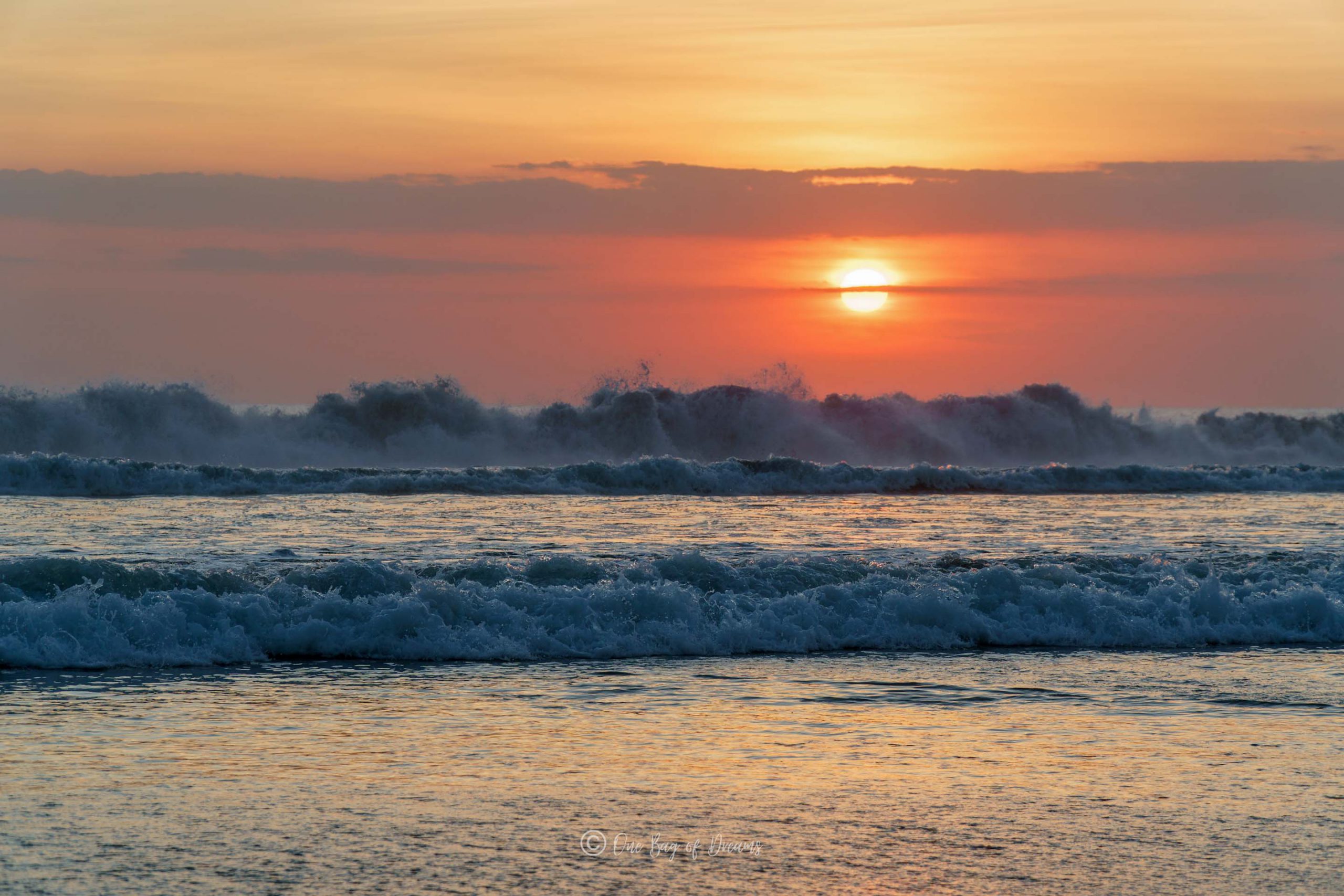
Day 14: Visit the Padang Padang Beach Before our Grand Finale at the Uluwatu Temple
You made it! Today is day 14 on your Balinese adventure!
You deserve a beautiful, relaxing swim at the Padang Padang Beach. This beach may seem familiar as this is allegedly the beach from Eat, Pray, Love. This beach is lovely, but it can get quite busy so try to get there fairly early for the best experience.
Following a relaxed day at Padang Padang beach, head over to Uluwatu temple for around 17:00 and prepare to marvel whilst discovering the incredible Kecak Fire Dance at Uluwatu Temple which starts at 18:00.
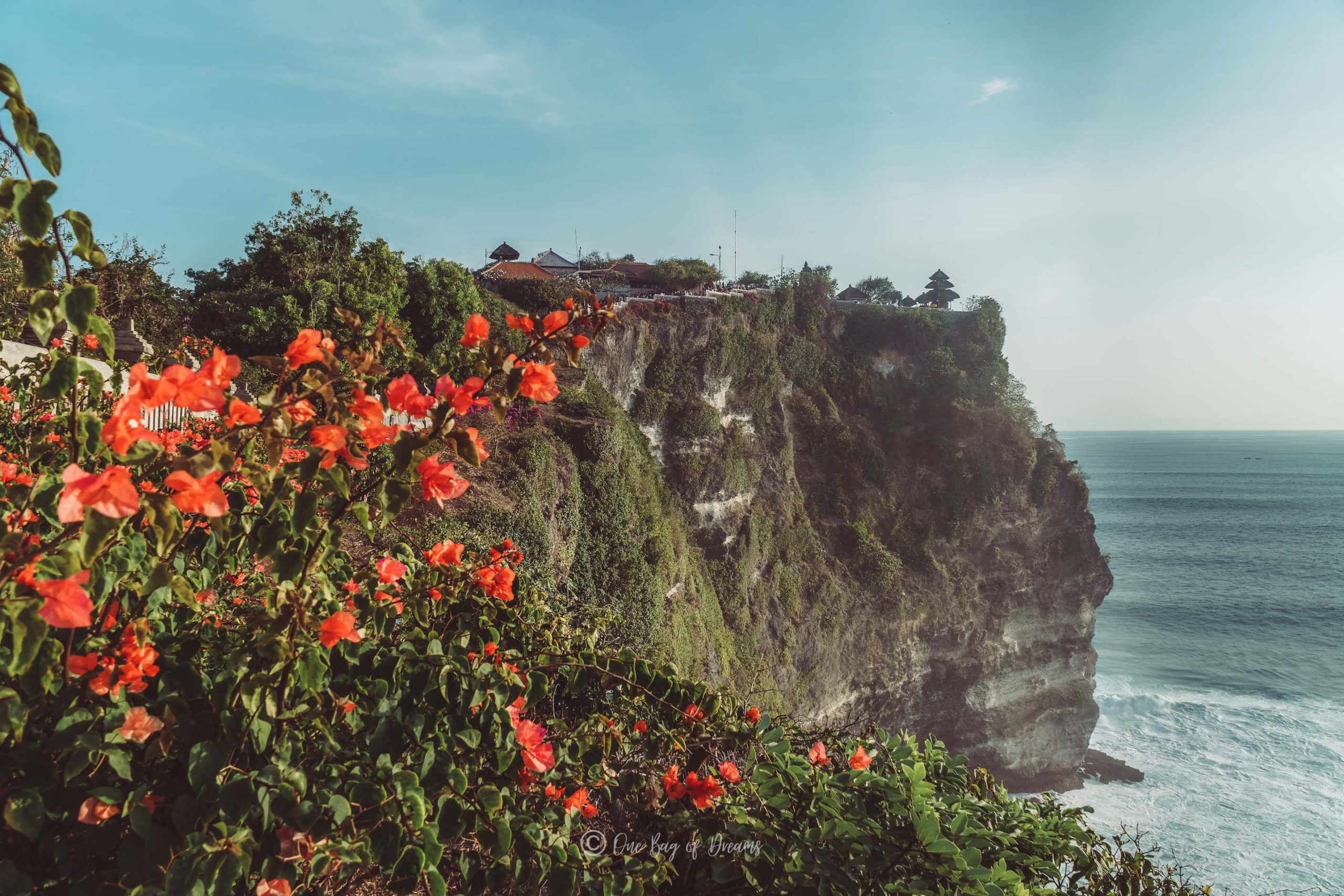
Explore the temple grounds and witness the panoramic sea views as a backdrop to this magnificent temple before sitting down in a circle and watching the incredible Kecak Fire. As you watch in awe at this dance, the sun will set behind this magnificent spectacle. The sunset amplifies the vivid colours from the real flames used in Kecak Fire Dance. This spectacle is utterly magnificent and a perfect way to end an incredible two weeks in Bali.
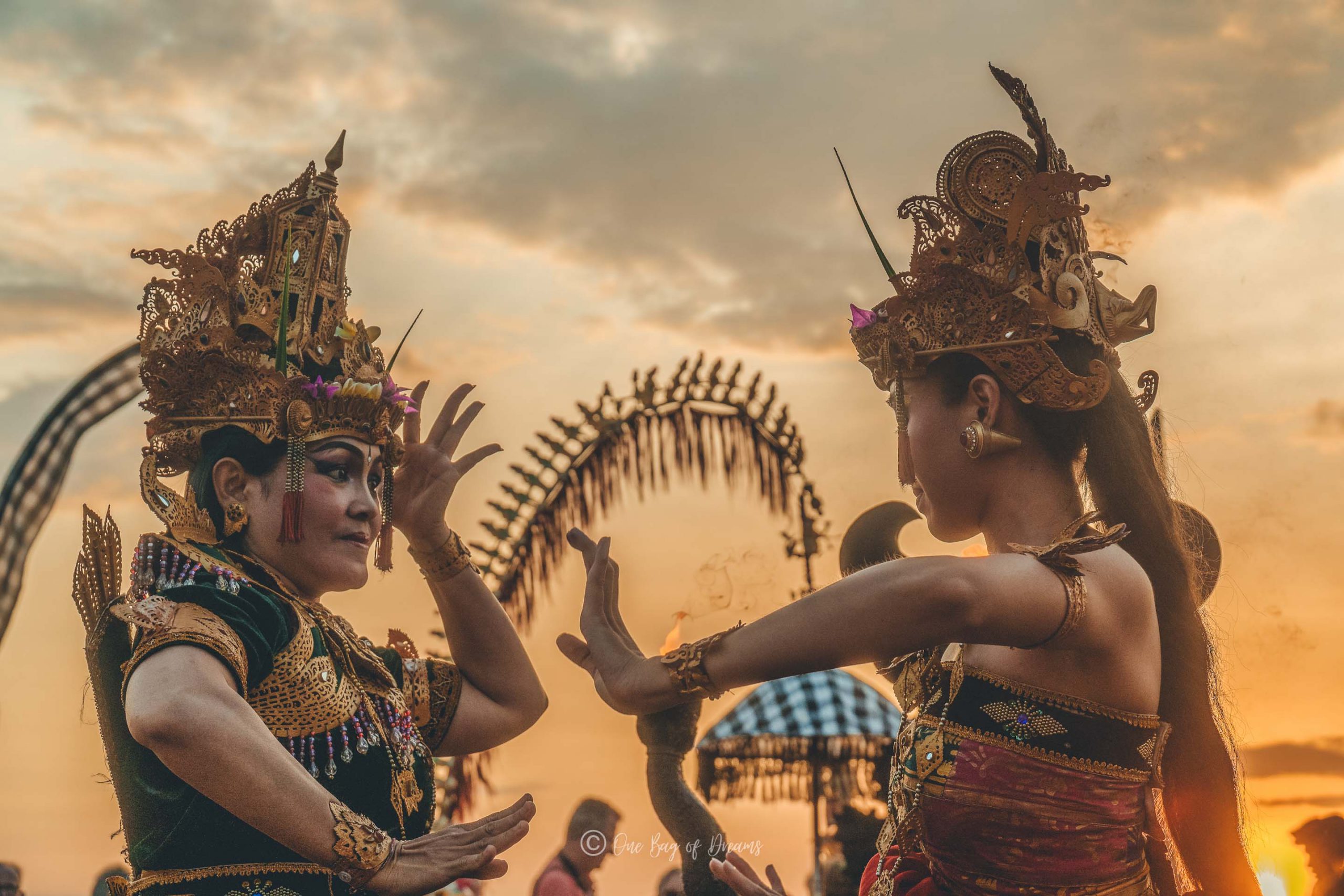
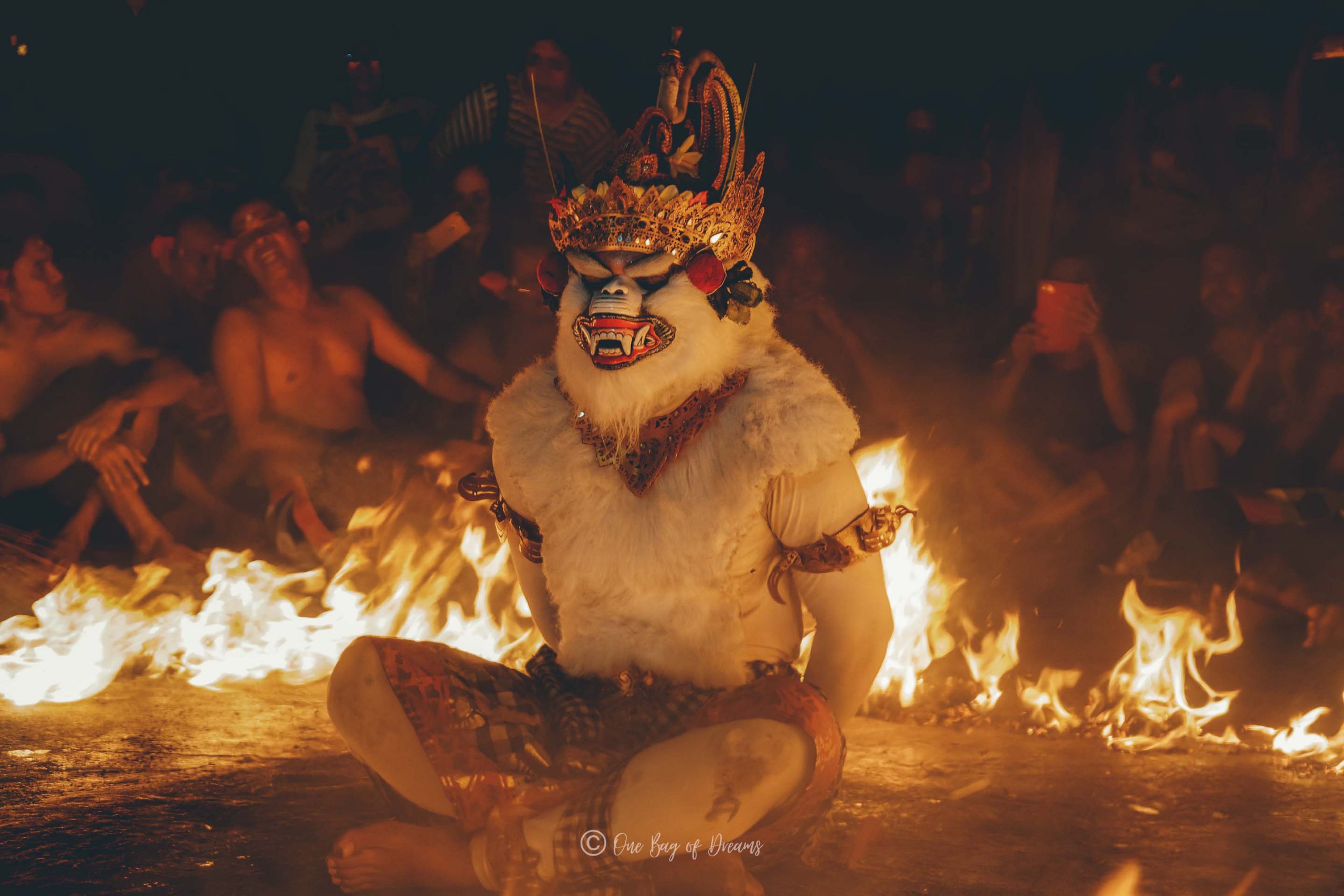
Arriving in Bali
When you land in Bali, you will probably arrive at Ngurah Rai International Airport. This is the main airport on the island.
Getting from Ngurah Rai International Airport (DPS) to Denpasar / Sanur
The most direct way to get from Ngurah Rai International Airport to Denpasar or Sanur is by Taxi. This takes approximately 20 minutes to Sanur and 25 minutes to Denpasar. This will cost around €11.
Getting from Ngurah Rai International Airport (DPS) to Ubud
Many tourists often choose to travel directly to Ubud. This is also possible and takes around 60 minutes. This will cost around €40 for two people.
General Note: The Balinese economy is very dependent on tourism. As a result, transfer services are widely available. Most accommodations will offer a transfer service from the airport, which you can book in advance. However, this may be slightly more expensive than a normal taxi.
Getting Around Bali
There are various different ways you can get around in Bali. Choosing the right combination for you will help you get the best out of your trip!
Renting a Motorbike or Scooter:
A great way to travel independently but not for the faint-hearted. Riding can be dangerous in Bali as the roads vary considerably to European standards. It is also important to remember that you are driving on the left. Always remember to check your travel insurance before riding off!
Cost: Renting a motorbike or scooter costs between €4 and €20 per day.
Booking an organised tour or driver:
A great option for a shorter visit. In Bali, there are many tour operators and drivers who will be more than happy to provide their services, for a fee. This gives you the benefit of local knowledge for the areas you are visiting. These drivers will often help to provide added extras onto your itineraries such as their favourite Warungs (Local restaurant-style eateries) or viewpoints.
Cost: The cost of a driver for the day varies depending on entrance fees and the distance travelled. A Best-of Ubud tour or an Ancient Temple tour will cost around €40.
Public Transport: Hop on a Bemo!
A great option if you are on a tight budget. Many points in Bali are connected through the Bemo service. These Bemos are very basic minibusses renovated to carry as many people (and quite often animals) as possible.
Cost: A trip can start from less the 50 cent. Drivers will often try and charge tourists more so if you are able to bargain, this may be a good opportunity to use your skills to save some money.
Public Transport: Trans Sarbagita in Denpasar
A great option for simple travel around Denpasar. This is great for localised travel. The busses are usually air conditioned and you can even get from the hustle and bustle of Denpasar to the vibrant temple of Batubulan.
Cost: A ticket can cost less that 50 cent!
Take a Taxi:
Using a taxi is a great, simple option. It is an easy way of getting around in the south of the island. The so call Blue Bird taxis are well known for being reliable. You can even hail a Blue Bird taxi using an app, similar to Uber. Always ensure that the driver is using a meter, not simply suggesting a fixed price. This can save you a lot of money.
Cost: A 15 minute taxi journey will cost around €5.
Food You Need to Try in Bali
Balinese cuisine is going to be a huge part of your visit to the Island. Keep your eyes peeled for the below!
Chicken Satay: This classic is very popular in the Warungs in Bali. This consists of chicken (or sometimes other meat) skewers with a form of peanut marinade. This is a fairly mild but tasty flavour and is often served with spicy rice.
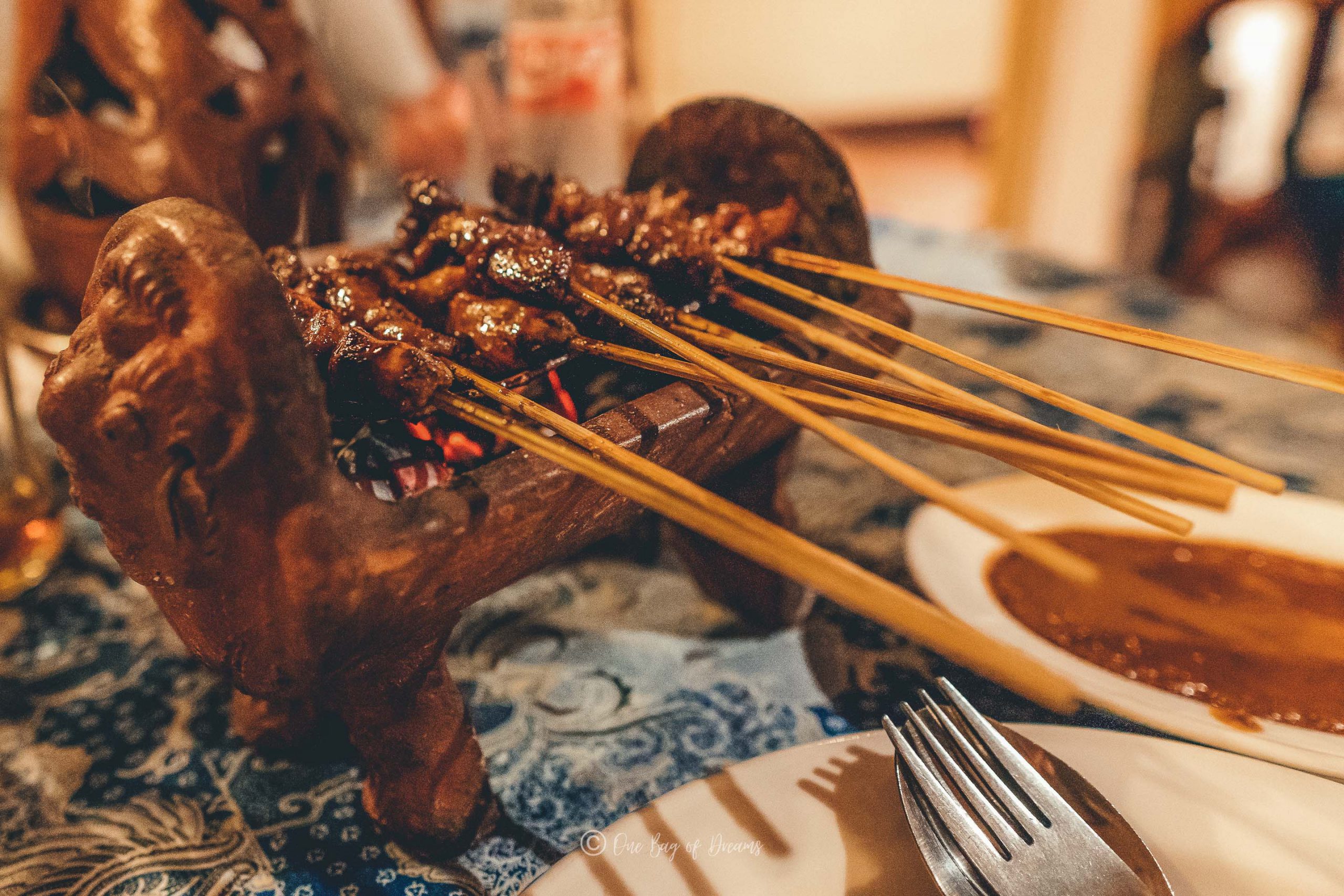
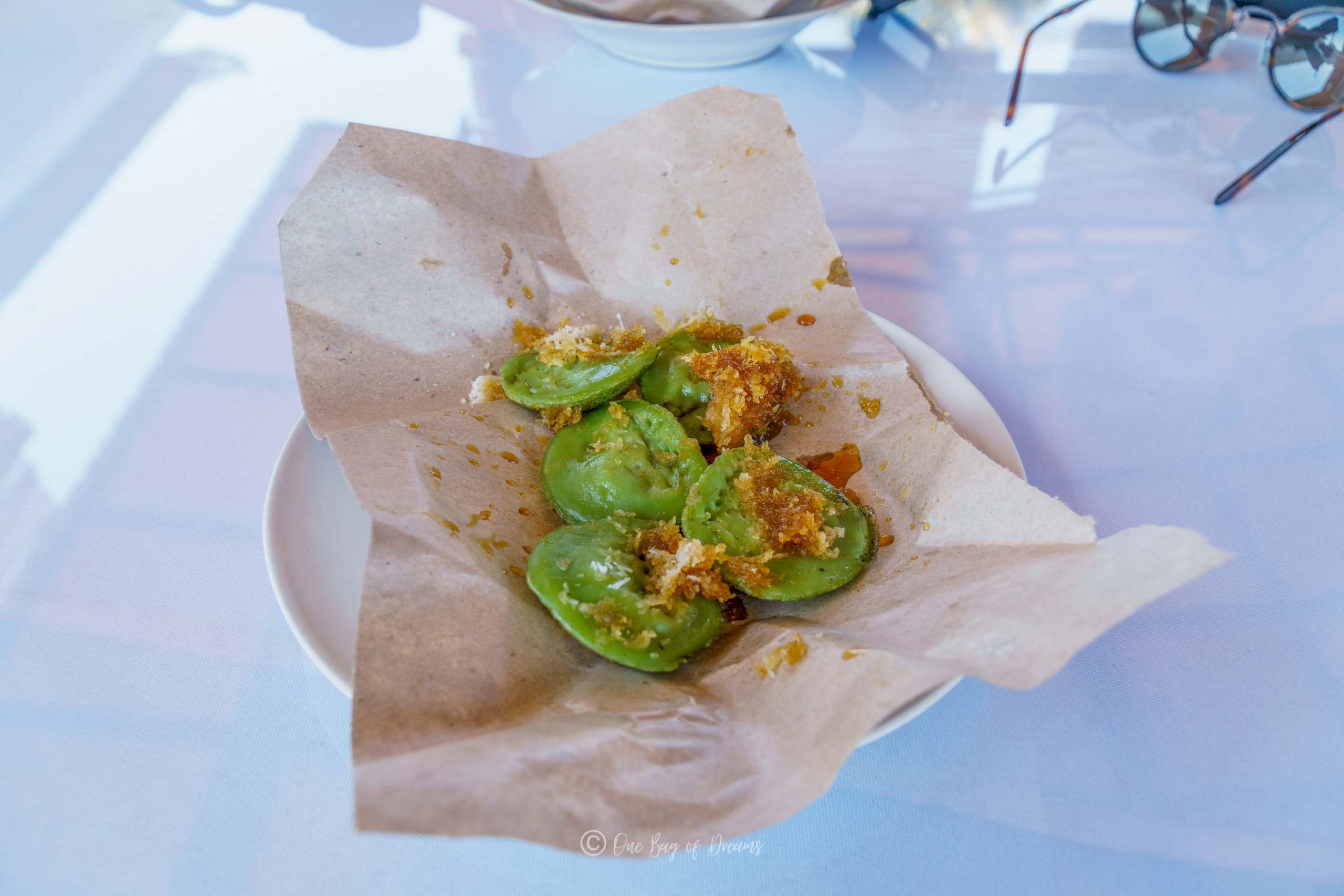
Laklak Cake: A Laklak cake is a green little treasure. It is quite simple and made primarily of rice flour and coconut milk. A Laklak cake is a tasty little treat, often topped with coconut shavings and some sort of syrup.
‘Pepes’ cooked fish: The Pepes style of cooking is very special. It essentially means that whatever is being served has been cooked whilst wrapped in Banana leaves. This method of cooking locks in the flavour, give it a try!
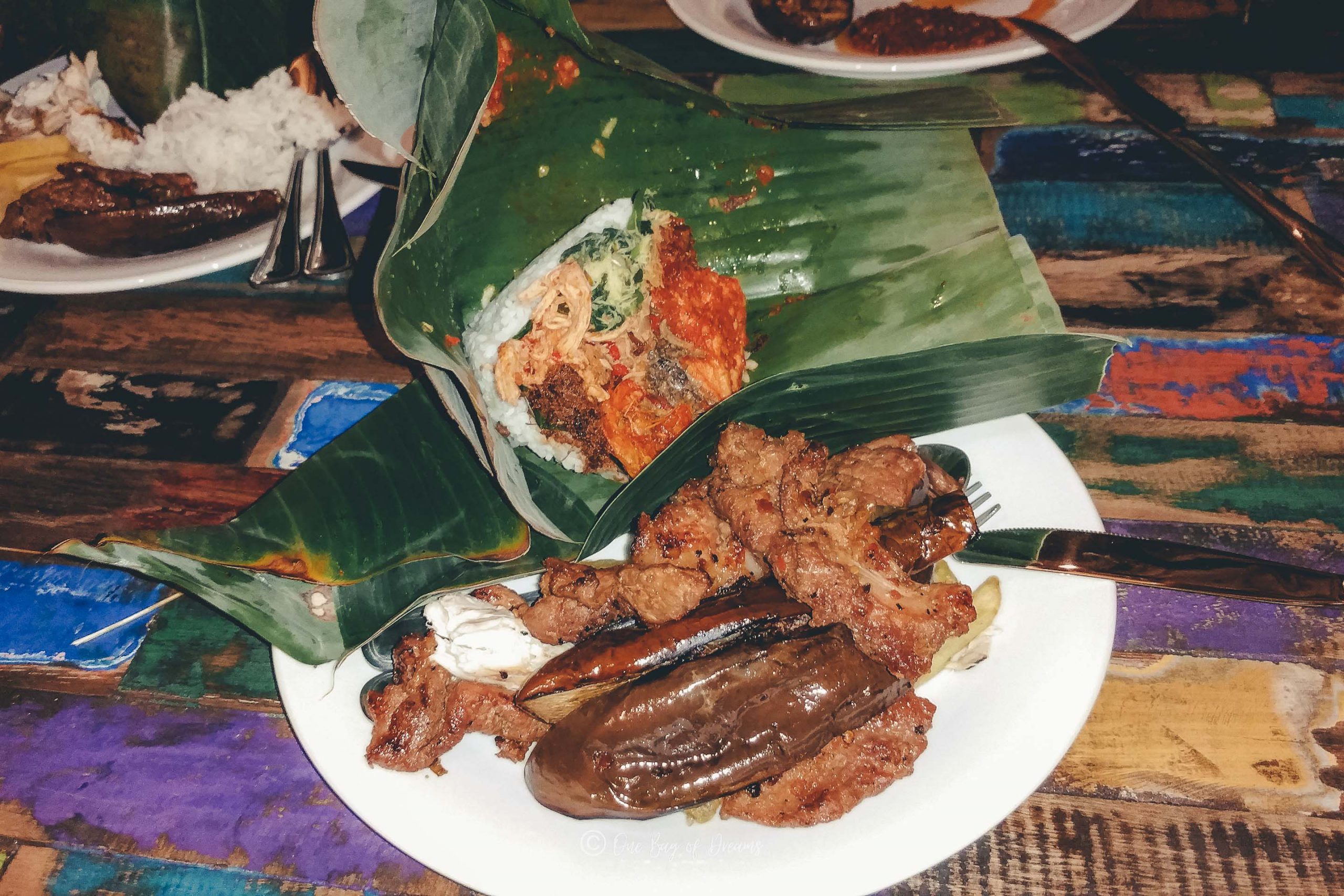
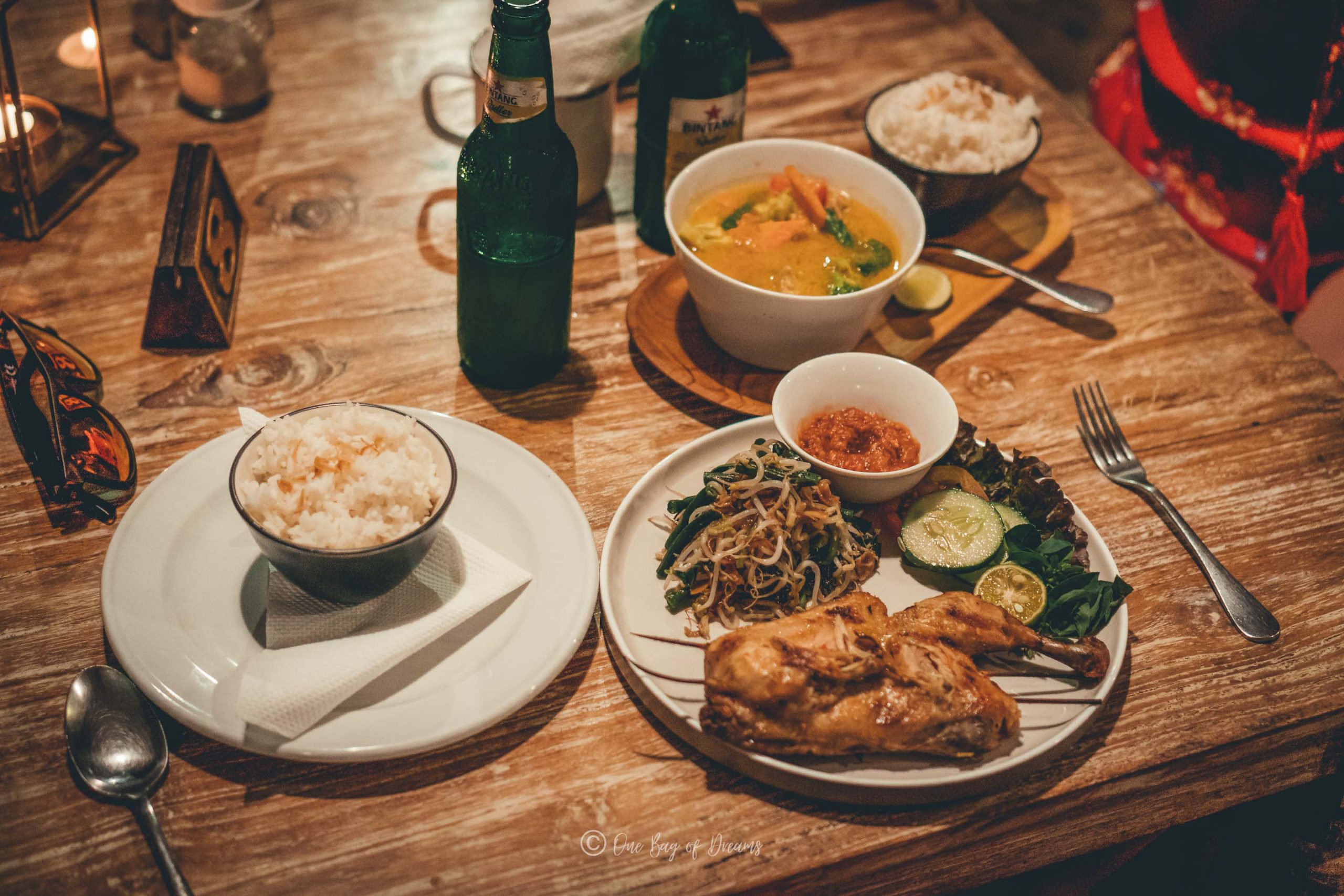
Crispy Duck: A very popular dish in Indonesia, crispy duck is a tasty dish which is often served with rice and some sort of salad. The spices on the duck make this dish unbelievably tasty. Perfect after a long day of exploring.
Pin This Bali Itinerary For Later!



